












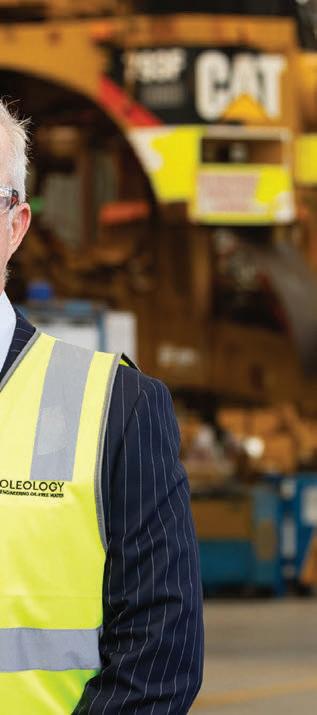





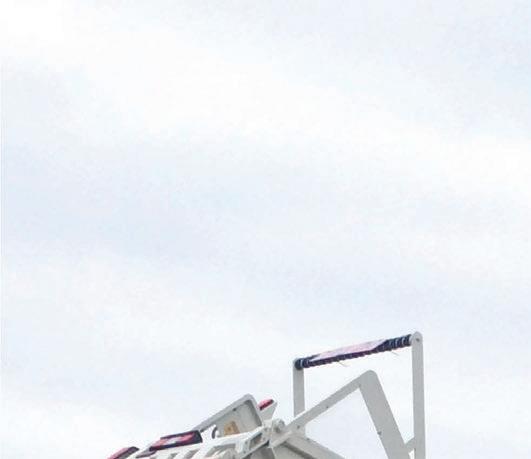
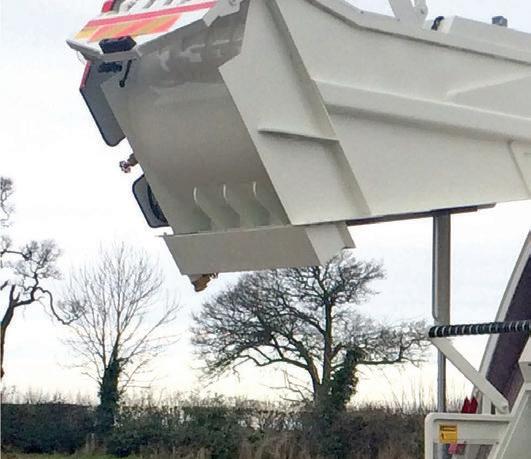



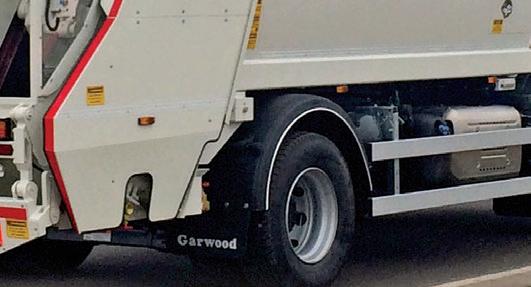
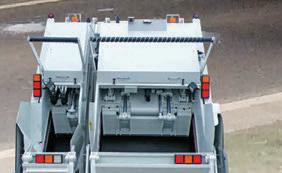
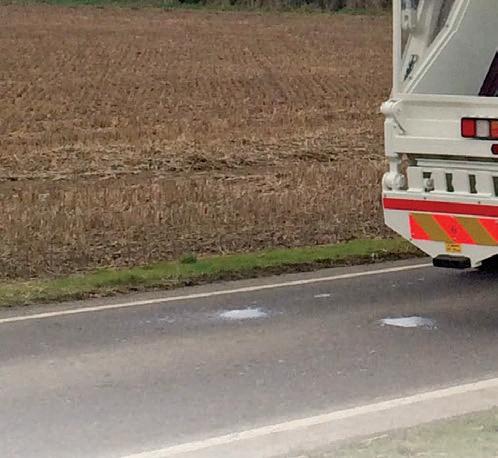




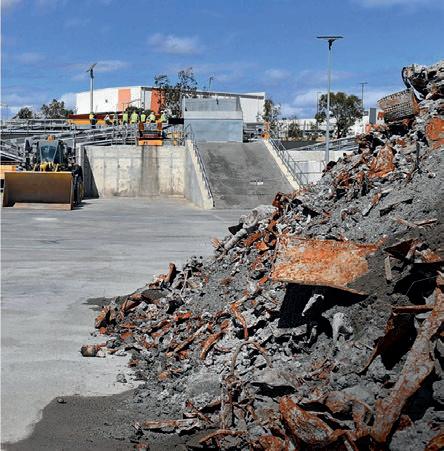
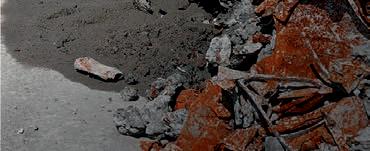




e inaugural year of Blue Phoenix’s incinerator bottom ash plant marks a signi cant milestone in resource recovery.
Australian technology company mapping the PFAS landscape.
From op shop origins to a national revolution.
Mapping Australia’s leachate landscape.
Is it time for a Waste Chain of Responsibility?
Breakthrough PFAS remediation technology from the University of Queensland.
A unique ‘Waste Safari’ transforms a suburban land ll.
A look at the inaugural year of Blue Phoenix’s incinerator bottom ash plant.


“WE ARE NOT SAYING THERE IS A SILVER BULLET FOR THIS CHALLENGE, BUT THERE IS A BIG KNOWLEDGE GAP AND WE ARE ABLE TO BRIDGE THAT GAP WITH SCIENCE.”

Saasha Callaghan, Technical Solutions Manager, OLEOLOGY
A single TANA shredder has sparked a circular economy revolution.
Inside the latest Australian Organics Recycling Association report.
Spotlight on Aerated Static Pile compost systems.
Spotlight on safety within the waste and recycling sector.
Making an impact on Australia’s circular economy.
LiuGong Australia establishes exclusive agship dealerships.
From AWRE and Circularity to ReGen, Sydney expo has its nger on the pulse.
44 NOMINATIONS OPEN
Waste Innovation and Recycling Awards: Recognising industry heroes. 46 BATTERY CIRCULARITY
Dissecting the challenges of a battery circular economy. 48 SELFLESS, STRONG AND SETTING THE STANDARD ree businesswomen share their journeys, challenges and achievements. 52 THE NEXT LEVEL
Trade show expands its award program for 2026.
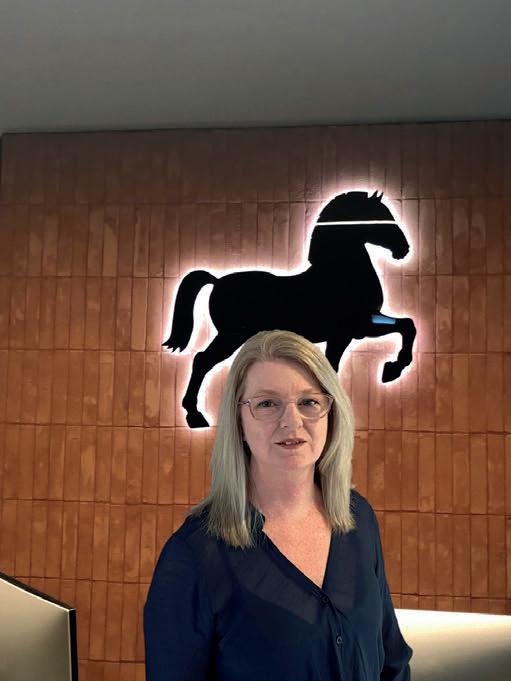
e persistent challenge of PFAS (per- and poly uoroalkyl substances) contamination continues to loom large, yet recent actions by the Australian Government o er a beacon of hope for a cleaner future.
From July 1, 2025, restrictions have come into e ect under the Industrial Chemicals Environmental Management Standard (IChEMS), banning the import, manufacture, and use of three key PFAS chemicals: PFOS, PFOA, and PFHxS. is decisive move aligns with Australia’s commitments under the Stockholm Convention and underscores a growing national resolve to curb the spread of these “forever chemicals”.
While legislative bans are a critical step, the true victory lies in e ective remediation. is is where the ingenuity of Australian companies like OLEOLOGY comes to the fore.
OLEOLOGY has achieved success in treating PFAS-contaminated water, boasting the ability to reduce these pervasive substances to non-detectable levels. In this edition’s cover story, we examine how the company’s technology is o ering a compact, e cient, and environmentally sound solution.
Contamination is something Australia’s organics recycling industry is also all too familiar with.
Recyclers currently face escalating costs and operational headaches due to “waste in the system” – everything from general plastics and metals to more insidious substances such as PFAS and asbestos.
We speak with Christopher Malan, Chief Operating O cer at SOILCO, who lays bare the challenges the industry is facing and calls for industry-wide collaboration to create a “Waste Chain of Responsibility”.
It’s a timely discussion as the Australian Organics Recycling Association releases its latest report, which also reveals the need for a harmonised policy. You can read the key ndings and a state-by-state breakdown of recycling rates in this edition.
We also bring you some more success stories, including a look back at the rst year of operation of Blue Phoenix’s incinerator bottom ash plant, the launch of a new plant to permanently retire mercury, and how a single piece of equipment has sparked a revolution for one New South Wales council.
Happy reading!

CEO Christine Clancy christine.clancy@primecreative.com.au
PUBLISHER
Sarah Baker sarah.baker@primecreative.com.au
MANAGING EDITOR
Lisa Korycki lisa.korycki@primecreative.com.au
JOURNALIST
Jennifer Pittorino jennifer.pittorino@primecreative.com.au
HEAD OF DESIGN
Blake Storey blake.storey@primecreative.com.au
DESIGN
Laura Drinkwater
BRAND MANAGER
Chelsea Daniel chelsea.daniel@primecreative.com.au p: +61 425 699 878
CLIENT SUCCESS MANAGER
Justine Nardone justine.nardone@primecreative.com.au
HEAD OFFICE
Prime Creative Pty Ltd
379 Docklands Drive Docklands VIC 3008 Australia P: +61 3 9690 8766
enquiries@primecreative.com.au www.wastemanagementreview.com.au
SUBSCRIPTIONS +61 3 9690 8766 subscriptions@primecreative.com.au
Waste Management Review is available by subscription from the publisher. e rights of refusal are reserved by the publisher
ARTICLES
All articles submitted for publication become the property of the publisher. e Editor reserves the right to adjust any article to conform with the magazine format.
COVER Cover image: OLEOLOGY
COPYRIGHT
Waste Management Review is owned by Prime Creative Media and published by John Murphy.
All material in Waste Management Review is copyright and no part may be reproduced or copied in any form or by any means (graphic, electronic or mechanical including information and retrieval systems) without written permission of the publisher. e Editor welcomes contributions but reserves the right to accept or reject any material. While every e ort has been made to ensure the accuracy of information, Prime Creative Media will not accept responsibility for errors or omissions or for any consequences arising from reliance on information published. e opinions expressed in Waste Management Review are not necessarily the opinions of, or endorsed by the publisher unless otherwise stated.
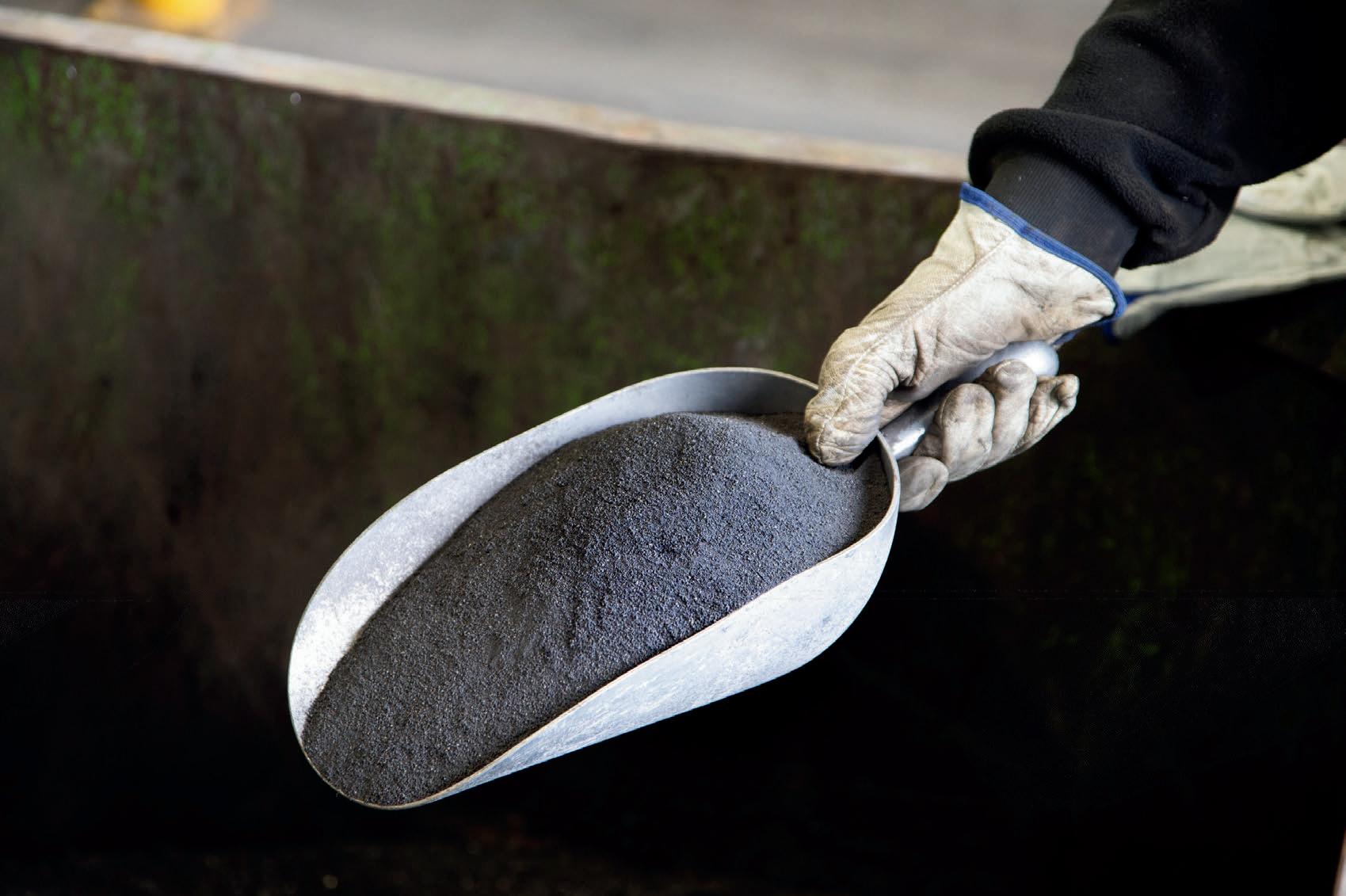


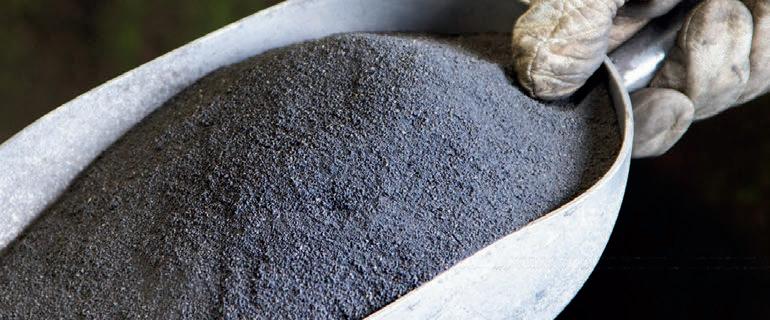


At EcoBatt, we are driving real change through our nationwide Battery Collection Service, which is designed to significantly reduce the number of batteries ending up in landfill. With approximately 7,000 collection units located across Australia in partnership with major retailers, we are making battery recycling more convenient and accessible than ever before.
Improper battery disposal can have serious consequences. From fires in waste trucks and landfill sites to toxic chemicals leaking into soil and waterways, the risks to our environment, wildlife and community health are far-reaching.
Recycling batteries correctly is a simple yet powerful way to protect what matters. By working together, we can create a cleaner, safer future and preserve valuable resources for generations to come.


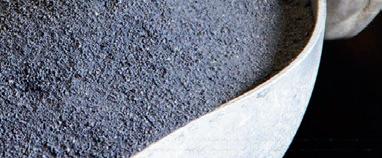
What’s recyclable through EcoBatt’s Smart Bins?
Button cell batteries
Mobile phones
Easily removable batteries
Rechargeable batteries under 5kg
Regular AA & other household batteries







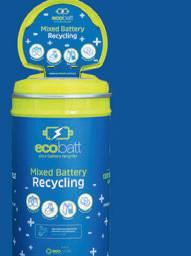
For organisations grappling with substantial battery waste, EcoBatt offers tailored solutions. From battery recycling bins ranging from 2L to 120L to our larger-scale Mixed Battery Safety Bins available in 600L and 800L capacities, we’ve got you covered.
Reach out to us at 1300 32 62 92 to connect with one of our battery recycling specialists who will craft a bespoke solution to suit your needs. Because protecting what matters starts with all of us working towards a cleaner, greener tomorrow, join with EcoBatt today.


From op shop origins to a national revolution. Waste Management Review looks at the enduring power of reuse.
For Australians, the humble op shop is an iconic institution, deeply ingrained in the fabric of communities across the country. What many might not realise, however, is that the very term “op shop” itself has its roots in Melbourne, dating back a century to 1925.
Born from a desire to raise funds for St Vincent’s Hospital’s X-ray department, the rst “stores of opportunity” – or “magasins d’occasion” as they were known in Paris – were pioneered by Lady
Millie, seeking a more appealing name than thrift or charity shop.
While organisations such as Vinnies and Salvos (part of the Salvation Army) have been operating for even longer, this marked the beginning of a uniquely Australian phrase, embodying a centurylong tradition of reusing goods for social good.
Fast forward to today, and this grassroots movement is undergoing a transformation, with reuse gaining recognition within Australia’s waste
hierarchy. At the forefront of this shift is Charitable Reuse Australia (CRA), an organisation championing the role of charitable reuse in building a more circular economy.
e importance of reuse, which sits directly below reducing consumption in the waste hierarchy, cannot be overstated.
As Omer Soker, Chief Executive O cer of Charitable Reuse Australia, states, “Reuse, for us, is really the act of reusing an item in its original form.”
“It’s not recycling, it’s not repurposing,”

For John Gertsakis, Director of the Product Stewardship Centre of Excellence, reuse is the rst responder to waste prevention, conserving resources
“Reuse enables consumers to take control and make conscious decisions to look after their products and keep them circulating in their households, their communities, and the economy more
Both agree the environmental bene ts are clear – the more things we reuse, the
For many years, quantifying the impact of reuse proved challenging. However, groundbreaking work by Charitable Reuse Australia, in partnership with Monash University and funded by an Australian Research Council grant, led to the development of the national reuse
is framework has enabled the quanti cation of reuse’s triple bottom line impact – environmental, social and economic.
e ndings show reuse is providing substantial nancial relief to households, highlighting the vital role that op shops and second-hand goods play in reducing expenses, while also delivering job opportunities (6300 full-time jobs including for people facing barriers), and fundraising for charity social programs to support Australians in need (charities reinvested $180 million from op shops into social programs).
Reuse is also accelerating Australia’s transition to a circular economy, saving 1.4 million tonnes of carbon dioxide emissions – equivalent to removing 585,000 passenger vehicles from the road.
New South Wales, lauded by Omer as a leader in the circular economy, was the rst State Government to fund a comprehensive study on the impact of reuse.
Omer says the ndings are compelling. Reuse in New South Wales generates 25 times more jobs than recycling per tonne of materials handled. e study also found 343,000 tonnes of carbon emissions saved and $432 million in community savings, directly impacting the cost of living for residents.
Similar studies are now underway in other states, with Tasmania showing an even greater impact, creating 34 times more jobs per tonne through reuse.
is data underpins the Charitable Reuse Conference, an annual event that has grown in recent years. What began with about 60 attendees in 2018 has expanded to more than 280 delegates across two streams in 2024, re ecting a growing industry and government interest in reuse.
Omer says the conversations at the conference have evolved from basic waste discussions to encompass complex topics such as the circular economy.
“It’s grown quite tremendously,” he says, highlighting that the event now features two streams, including a dedicated one for shop managers to educate, empower and inspire up-and-coming people.
He attributes the surge in interest to several factors, including Charitable Reuse Australia’s strategic decision to change its name from Charitable Recycling Australia to better re ect its core mission.
Omer says the term recycling was a broader umbrella, but as the nuances of the waste hierarchy became clearer, the time was right to champion “reuse”.
“I think the governments are also starting to become more nuanced as well,” he says, referencing the shift from waste policies to incorporating circular economy and, increasingly, reuse and repair strategies.
John says that while knowledge about reuse is relatively high among those who understand the bene ts, there’s a need to clarify how it compares to recycling, especially for
29-30 October 2025
Melbourne Convention & Exhibition Centre
100+ Exhibitors from over 10 Countries 100+ Speakers Delivering over 50 Sessions Across 3 Stages Network with 3,000+ Peers

the general public. He believes consumers are “increasingly savvy about reuse being central to waste prevention, while recycling, as important as it is, has a focus on managing the symptoms of overproduction and over-consumption”.
“ e reality is we need a better balance of interventions, investment and action across the waste hierarchy with more emphasis in the top half, i.e. avoid, reduce, reuse and repair,” he says.
e potential impact of widespread reuse is immense, as demonstrated by a hypothetical scenario explored by Charitable Reuse Australia. If every person in New South Wales bought all their clothes second-hand for just one year, it could divert 125,000 tonnes from land ll, save 1.3 million tonnes of carbon emissions, conserve 68,000 megalitres of water (equivalent to 27,000 Olympicsized swimming pools), provide $3.9 billion in cost-of-living relief, and raise $740 million for social welfare.
Omer says this powerful illustration underscores that even “one little change can make a huge impact”.
To amplify that impact, Charitable Reuse Australia is advocating for three key policy changes – more accessible grants tailored to charities, recognising their long-standing work and signi cant impact in land ll diversion, emissions
savings, job creation, and social welfare; encouraging more people to donate usable items to charity shops or commercial reuse enterprises; and see reuse integrated into government policy, with targets set that will drive necessary interventions and funding.
“Doing more stu higher up the waste hierarchy– whether it’s repair, reuse, or refurbishing – will be better for all of us,” he says.
However, signi cant challenges hinder reuse at scale.
e single biggest challenge, according to John, is “over-production and overconsumption, backed in by aggressive sales and marketing campaigns by brands and retailers to update, upgrade and keep purchasing new products”.
“ is is further compounded by planned and premature obsolescence by some manufacturers and brands, despite claimed commitment to circularity and ESG (environmental and social governance) objectives,” he says.
“ e design and production of shortlife products is also a major barrier to reuse, repair and the ability to give products a second and third life.”
In addition to more e ective consumer education, he says the need for smart regulations is overdue in Australia.
In its nal report in 2024, the Circular Economy Ministerial Advisory Group (CEMAG) recommended the creation of a Circular Economy Act, providing a clear framework for setting design rules for products and labelling their performance, like the European Union’s Ecodesign for Sustainable Products Regulation.
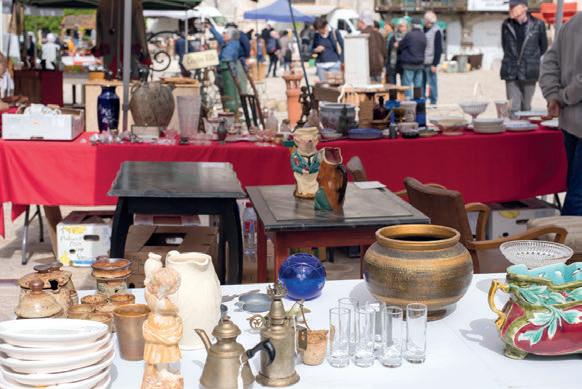
ese design rules should enable the establishment of circular economy requirements for products, including those related to durability, repairability, recyclability, and the presence of chemicals of concern.
France has led the way with its Repairability Index, which e ectively drives product redesign and requires brands to provide consumer
information and labelling that indicates a repairability score or ‘star’ rating.
e French have also introduced laws that ban the destruction of unsold goods by requiring brands to donate or reuse products.
John says that despite these challenges, there are clear successes, led by Charitable Reuse Australia.
“I’m always impressed with their foresight and the practical work of their members and volunteers, especially when it comes to the reuse of clothing, homewares and small appliances,” he says.
He also highlights the role of local councils, serving as ambassadors of reuse, who do what they can to promote reuse, including the operation of tip shops and similar facilities.
And while not yet widespread, some manufacturers are incorporating reuse, refurbishment, and repair into their business models for major appliances.
“ is is usually limited to refurbishing warranty returns but provides a glimpse of what could be possible at scale if all whitegoods and small appliance brands moved beyond recycling end-of-life products as part of a more comprehensive product stewardship approach,” John says.
He stresses that product reuse should not be limited to just household consumers, but also for government agencies and businesses, advocating for the inclusion of reuse and secondhand goods in government and business procurement.
“We increasingly talk about the circular economy, but we need to get serious about honouring the waste hierarchy as an essential bus-stop on the way to a more restorative and regenerative economy that is environmentally positive, not just ‘less bad’.”
e 2025 Charitable Reuse Conference will be held in Sydney at the UTS Aerial Function Centre on October 13-14. It will be a special “Once in a Century” event celebrating 100 years of the term Op Shop.







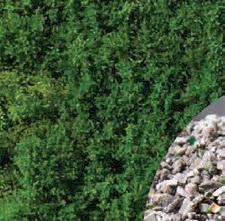

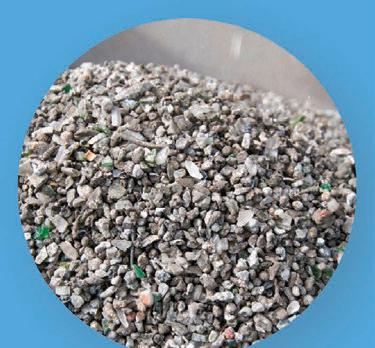




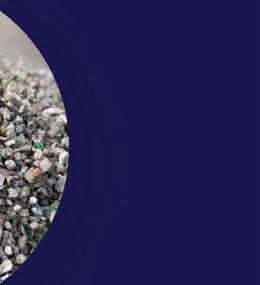




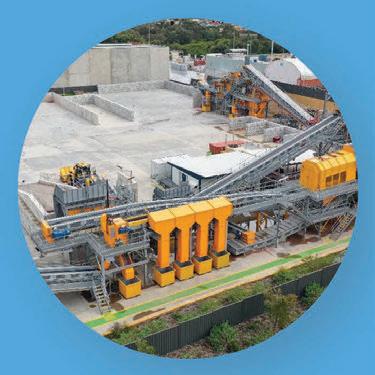



Blue Phoenix brings world-leading expertise in IBA processing to Australia, transforming waste into high-quality aggregates and recovered metals. By recovering these materials from IBA, we're reducing landfill reliance and enabling sustainable solutions for civil construction.


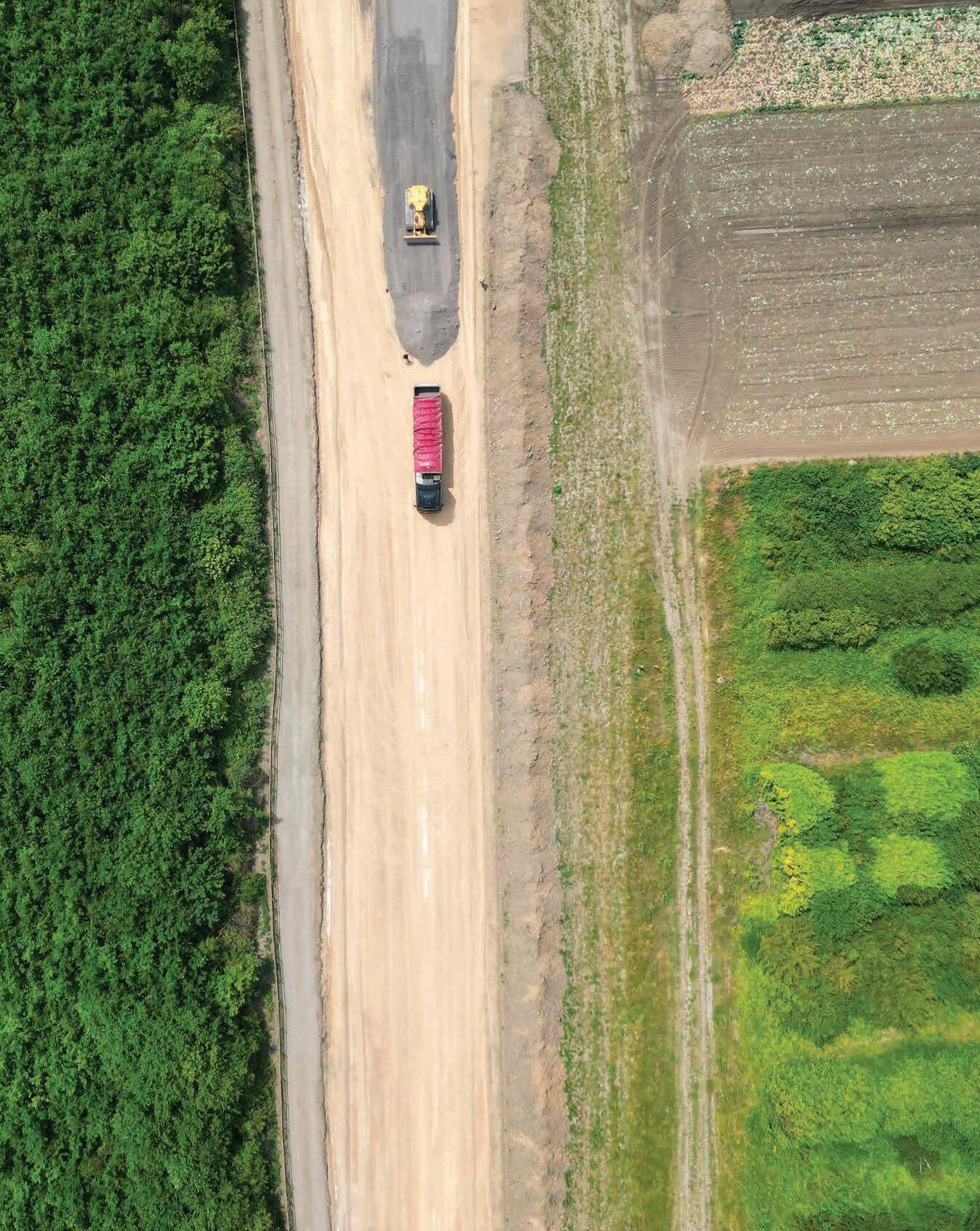
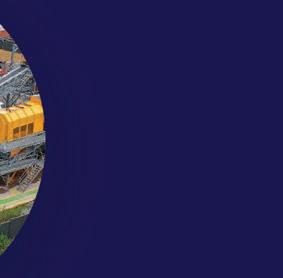

ith operations across the globe, we lead in developing end mar ets and wor ing with regulators to enable responsible reuse, preserve resources, and drive the circular economy rivin policy an circular solutions



Why one company is mapping Australia’s leachate landscape.
Australia’s waste management sector faces a monumental task: Navigating the complex and increasingly stringent regulations surrounding per- and poly uoroalkyl substances (PFAS) contamination.
While the industry grapples with the perceived di culty of meeting these demands, one company is taking a proactive approach by conducting an Australia-wide research and collection program of leachate water.
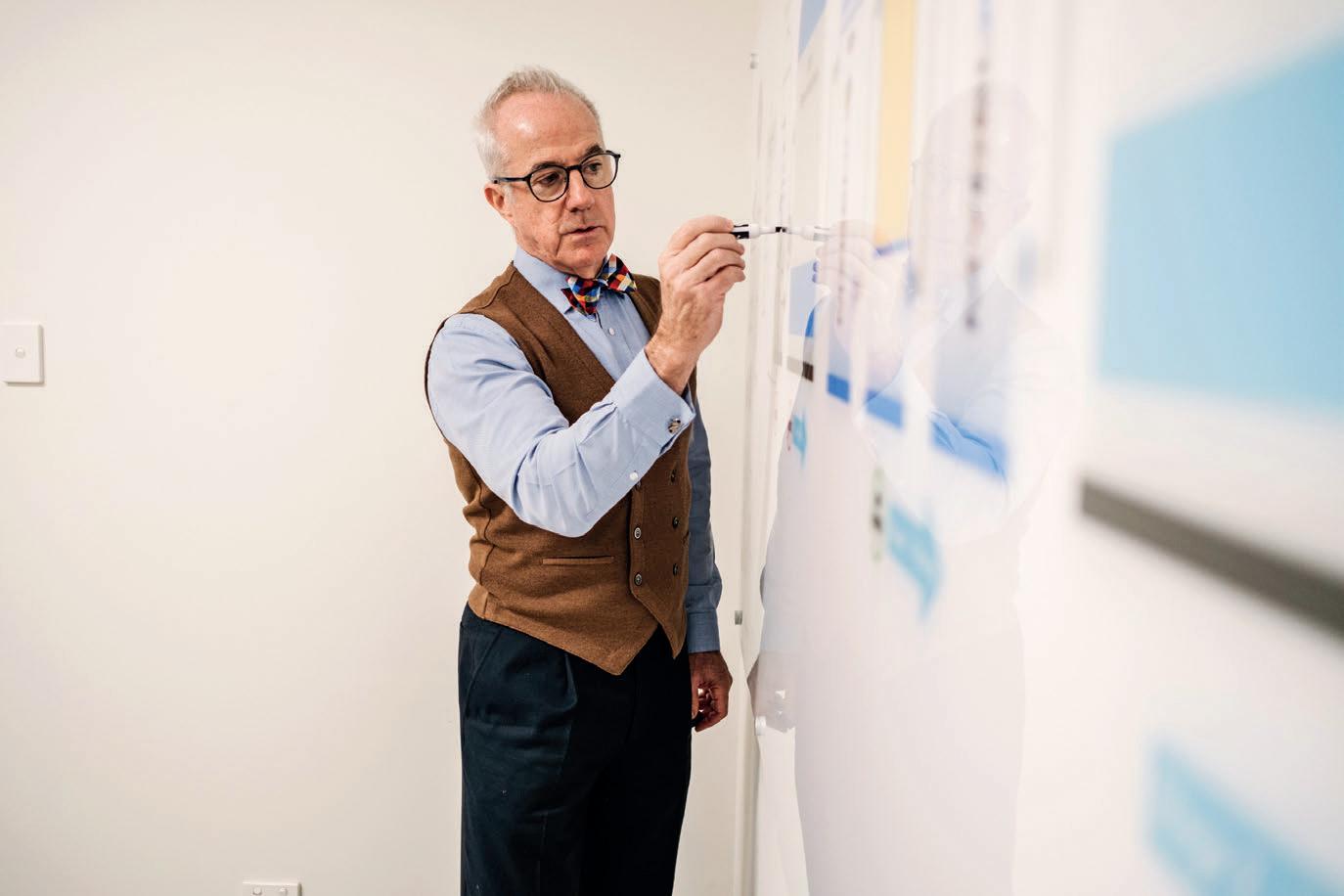
Saasha Callaghan, Technical Solutions Manager at OLEOLOGY, says it’s a boots-on-the-ground e ort to understand the full spectrum of contamination and to prove that e ective, commercially viable treatments are not only possible but
“ e reality for waste facilities and councils is that leachate management
“We get a lot of clients telling us it’s really hard to meet regulations surrounding PFAS levels. However, when OLEOLOGY examines the requirements, it hasn’t been that hard.
“We are not saying there is a silver bullet for this challenge, but there is a big knowledge gap and we are able to
PFAS are a group of man-made chemicals that have been used in various products since the 1950s because of their ability to resist heat, stains, grease, and water. ey’ve been dubbed “forever chemicals,” because of their persistence
Products containing PFAS are often disposed of in land lls. As the waste decomposes and leachate forms, PFAS seeps into the liquid, contaminating it.
collection initiative is a chance to fully understand the spectrum of contamination – the good, the bad
It’s driven by a desire to quantify the challenges faced across the country

and take practical steps to tailor e ective solutions.
She cites a case study from Western Australia that demonstrates the direct bene ts of the research. A client dealing with signi cant leachate problems, including o ensive odours and leaching into local waterways, was advised that reverse osmosis (RO) was its “silver bullet”.
OLEOLOGY’s analysis revealed the client’s leachate fell into “the real ugly” category, with large ammonia levels accompanied with PFAS.
Rather than advocating for an expensive, energy-intensive system, OLEOLOGY demonstrated that its technology could handle both ammonia and PFAS within the same treatment system.
To further demonstrate the system’s e cacy and cost-e ectiveness, OLEOLOGY proposed a novel approach – conducting a trial at its own facility.
“Conducting a trial on site is a huge expense,” Saasha says. “Instead, we recommended the client send us a sample every few weeks and we conducted the trial for them. It’s much more cost-e ective and reassuring for every stakeholder that this system is going to do what we say it’s going to do.
“ e technology and the advancement that OLEOLOGY has provided to the industry as a commercially viable solution for PFAS treatment and other co-contaminants is solidi ed in more than 13 years of research, data collection and execution out in the eld.
“ ese are not pilot trials. ese are working systems.”
Recognised as a leader in water treatment, the core of OLEOLOGY’s success is in its technology, which diverges from conventional treatment methods such as carbon and resins, instead focusing on permanent contaminant removal and minimal waste generation.
Its proprietary MyCelx technology, a polymer developed through extensive research and development since 2006, operates on a principle of molecular cohesion, where the polymer permanently binds with contaminants such as PFAS and oil at a molecular level. is ensures that the contaminants are not only separated but also irreversibly bound to the media, preventing their release back into the water.
e treatment process involves a multi-stage ltration sequence

designed to remove various contaminants in layers.
“We speci cally ensure that all cocontaminants are gradually removed from the water stream throughout the system,” Saasha says.
“We have multiple stages to avoid bottlenecks, which also reduces operational intervention. At the polishing end, our nal stage, reaching PFAS guidelines of below levels of detection is not a problem for us.”
She says this robust technology is the secret to OLEOLOGY’s cost e ciency, with sites down to just 0.0002 cents of the dollar spent on treating each litre of water. is saving is factored into operational costs such as power and lters (which are the only consumables).
e system is also self-sustaining, regenerating clean water produced within the system, thereby eliminating the need for harsh chemicals.
Beyond the cost-per-litre bene t, OLEOLOGY’s technology o ers advantages in waste management. Unlike conventional treatment methods that generate problematic sludge waste, the OLEOLOGY system produces a dry, solid waste.
“Because of this, we only need to replace the lters and sometimes its only one or two at a time,” Saasha says. “Chemically bound to that lter is the PFAS and other hydrocarbons and organic materials. You can simply put the lter back into the box it came in for disposal.
“ ere’s no need for expensive and disruptive suction vacuum trucks and extensive operator downtime for media changes.”
e disposal of the dry waste is also simpli ed – incineration, which completely destructs contaminants, and certi ed waste disposal sites.
Critically, Saasha says the United States EPA has proven that this
technology does not leach, meaning the PFAS is chemically bound to the media and will not release into the environment. As a result, the lters can be sent to a waste depot.
e widespread impact of PFAS is undeniable. Saasha highlights its presence in various sectors beyond traditional waste, including the shing industry, salmon production, oyster production and the agricultural and horticultural sector. Even the construction industry often fails to factor in PFAS treatment costs.
OLEOLOGY’s broad client base, which includes major liquid waste contractors, civil construction and dewatering companies, Defence locations and airport maintenance facilities, underscores the pervasive nature of the challenge to eradicate PFAS.
e company’s focus extends beyond leachate to PFAS in drinking water.

“So many people are focusing on the three main PFAS analytes – PFOA, PFHxS and PFOS challenges. But when you just focus on the three, you are missing out on the other 37 that are testable.”
Saasha Callaghan Technical Solutions Manager at OLEOLOGY
“Personally, I don’t want to have to consume PFAS, any level of PFAS,” Saasha says, re ecting a concern that resonates widely.
She says the US EPA has stringent drinking water standards that are driven by the availability of e ective technologies. OLEOLOGY’s technology has been approved for drinking water treatment and has contributed to reducing allowable PFAS levels.
Saasha hopes to see similar proactive measures in Australia. She says OLEOLOGY’s commitment to water quality stems from a core ethical principle instilled by the company’s founder, Paul Callaghan.
“Paul actually cares and has always had a motivation to make a di erence in the community,” Saasha says.
“We see PFAS as an immediate need right now because, unfortunately, we’re seeing a lot of people get burned, and we want to right the wrong in the market. We want to x the root cause of the problem.
“People are coming to us with other challenges. We don’t necessarily have all the answers, but we will go away with our innovation team and actively seek solutions to those challenges, even those not yet seen in Australia.”
e Australia-wide leachate collection, initiated in October 2024, is a testament to this ethos.
Saasha says the research aims to create an understanding and identify solutions for not just PFAS, but also co-contaminants that unexpectedly emerge. “So many people are focusing on the three main PFAS analytes, PFOA (per uorooctanoic acid), PFHxS and PFOS (per uorooctanesulfonic acid)
challenges. But when you just focus on the three, you are missing out on the other 37 that are testable,” she says.
“We’ve always been able to keep ahead of the curve. For the past 13 years, we’ve been able to remove all of those and the precursors to non-detectable levels, as cost-e ectively as possible, with the lowest risk to the end user.”
While global e orts to halt PFAS production are crucial, managing existing legacy contamination, particularly in land lls and a ected waterways, remains a signi cant task for OLEOLOGY.
e company’s cost-e ective, scalable, and environmentally sound technology o ers a pathway for Australian waste management to address the PFAS challenge head-on. OLEOLOGY encourages all councils and industries with PFAS challenges to be part of the nationwide leachate review and email pfasfree@oleology.com.au.
For more information, visit: www.oleology.com.au
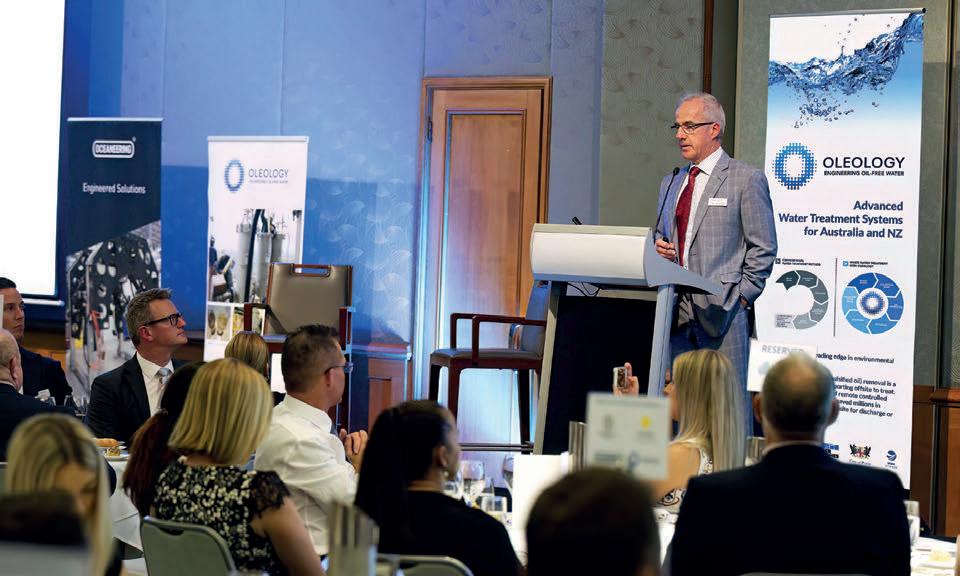
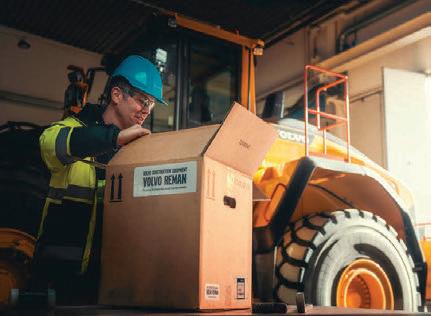
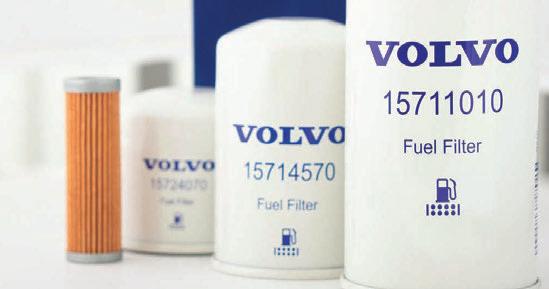









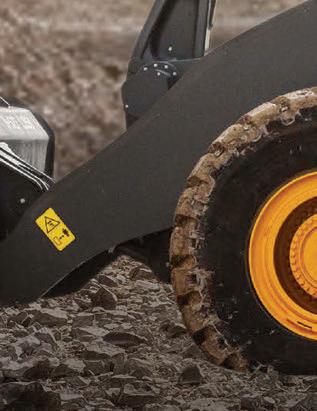


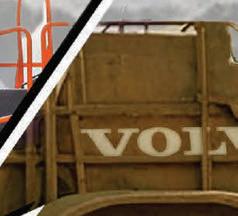











Contamination is costing the organics processing industry millions and hindering a circular economy. I ’s hie perating cer hristopher alan says industry-wide collaboration is needed to create a “Waste Chain of Responsibility”.

Australia’s waste management industry stands at a pivotal juncture, particularly concerning organics.
Christopher Malan, Chief Operating O cer at SOILCO, says Food Organics and Garden Organics (FOGO) mandates, while vital for environmental sustainability, also bring challenges that demand a shift in how the entire supply chain operates.
He says it’s time for every stakeholder, from households to regulators, to step back and collectively rethink the approach to organics collection and processing.
“We all have to partner together to try and achieve an optimal outcome. As far as I see it, the waste supply chain is not there yet,” he says.
“I’m calling for all of the players to come together and consider how we can shift from an adversarial relationship to a partnership relationship, to achieve best possible outcomes for our communities and the environment.”
Christopher joined SOILCO, a prominent organics recycling business with a signi cant presence across the East Coast, in January, bringing a decade of experience running ELB Equipment in Australia and New Zealand, a major supplier of waste processing and recycling equipment.
His long-standing association with SOILCO and prior work with other key players in the organics recycling sector has given him a unique perspective on the industry’s intricacies.
Christopher’s professional drive is rooted in “organising the kinks in businesses and getting them to work more uidly, e ciently and at scale,” particularly the human element of leading a team on a journey to achieve signi cant goals.
is passion is now focused on supporting SOILCO’s mission to expand its operations and cement its position as one of the largest organics recycling businesses in the country.
“Getting the team excited to achieve something signi cant is what motivates me,” he says. “Here, I absolutely love
that I can pair that with a business focused on the circular economy and that we’re doing a fundamentally good thing for the environment – manufacturing products that enhance the health and productivity of soil and contribute to more sustainable communities.”
He says that vision also requires buy-in from the entire supply chain, including households, businesses, packaging manufacturers, transporters, processors, local government, and regulatory bodies such as Environmental Protection Authorities (EPAs).
Christopher is emphatic that his call is not a critique of any individual player, but rather an invitation for collective introspection. He points to the transformations in workplace safety and transport safety (chain of responsibility) over the past two decades as examples of industries that recognised the futility of an adversarial system.
In those models, every entity within the supply chain holds an obligation to the entire chain, making transparent, best-practice decisions rather than simply shifting liability. is proactive, shared
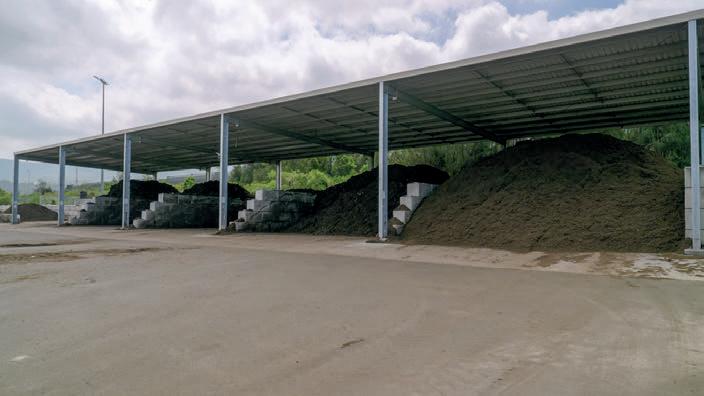
responsibility, he argues, is lacking in the current waste supply chain.
“I do think that we all collectively need to step back and rethink our approach to liability and our approach to contracting,” he says. “Currently, various players in the supply chain are absolutely looking to contract away their liability. ey are looking to contract away transparency and create a situation in which they can simply say, ‘not my problem’.
“I think that we need a new framework in which such behaviour is not generally accepted and, quite frankly, not allowed.”
He highlights recent draft contracts from some councils that e ectively divorce them from the consequences of their waste streams once materials are picked up, even if problematic materials are later discovered.
While experienced players such as SOILCO would propose alternative terms that share risk and encourage all parties to work collaboratively to reduce contamination, others lacking the same experience might accept them, potentially leading to
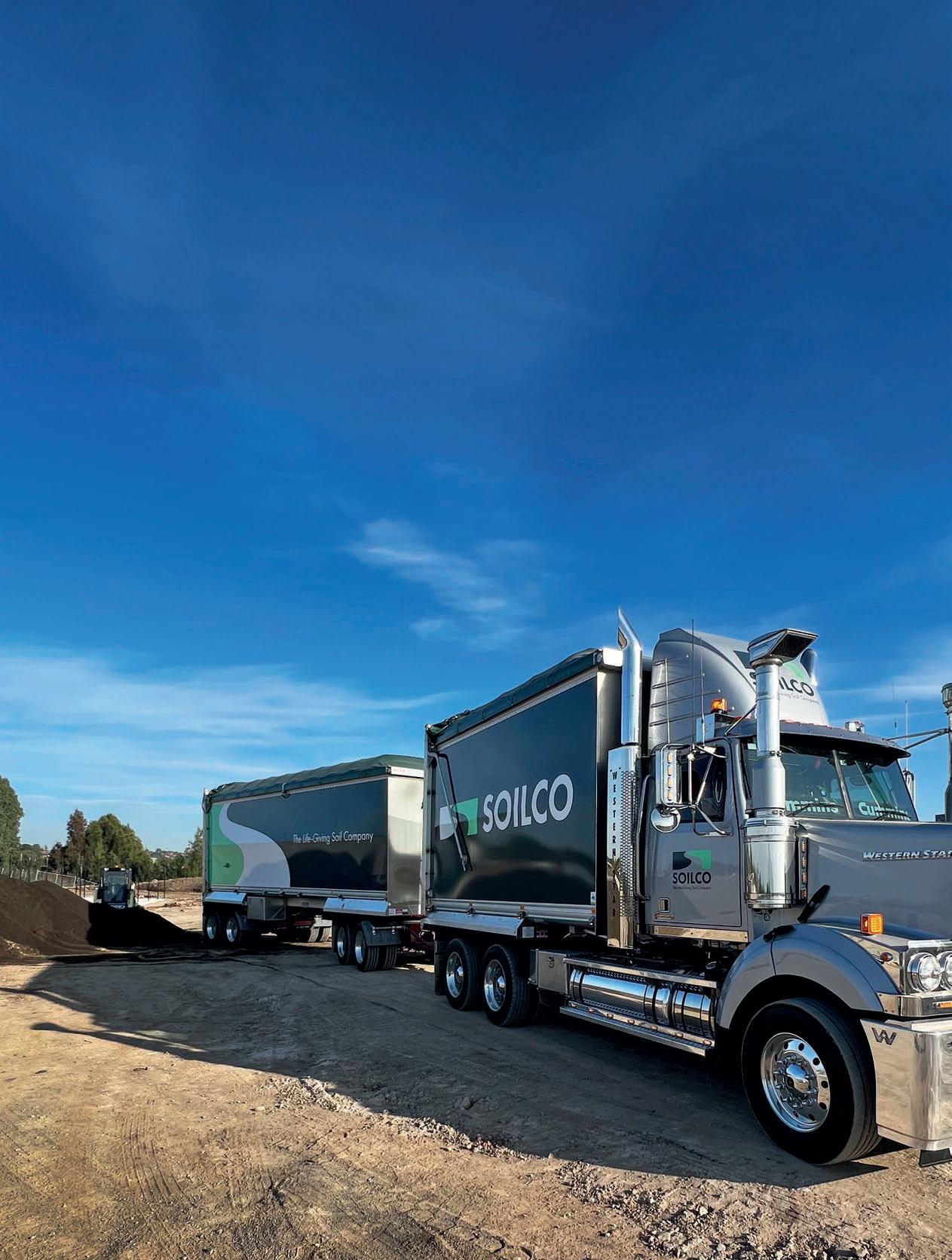
is on a
situations where they are forced to choose between commercial and environmental outcomes.
“We, as much as possible, don’t want any of the players in the supply chain to be confronted by that choice,” Christopher says. “We need them to always be picking the environmental outcome, but we can’t do that if the terms, under which they’ve contracted, back them into a corner.
“Everybody in the supply chain has an obligation to make the best decisions with the things that are under their control and to communicate quite transparently, because if any one of those players fails to do that, they simply push liability to some other player.”
e consequences of this fragmented approach are tangible and costly. In the absence of practical management solutions and risk-based thresholds, processors are left with contaminated
products and are forced to land ll thousands of tonnes of otherwise recyclable material that would have contributed to the circular economy.
Legal, consulting and disposal fees quickly add up to millions of dollars.
Contamination of input material is now equal second as a critical obstacle to organics recycling according to the Australian Economic Advocacy Solutions (AEAS) Industry Capability Assessment 2022-2023 prepared for the Australian Organics Recycling Association (AORA).
is “waste in the system,” as Christopher calls it, diverts critical resources that could otherwise be invested in infrastructure to meet the increasing volume demands of the New South Wales mandate requiring all households to have a FOGO collection service by 2030.

is narrative, he believes, is not unique to SOILCO but is mirrored across the country’s organics and other recycling sectors, with contamination leading to signi cant nancial and environmental burdens. And the problem has the potential to escalate with increased FOGO adoption if there is no change.
“As it stands today, compared to garden organics only, an average load of FOGO contains higher physical contamination, and the complexity of light and rigid plastics introduced by food waste leads to lower product yield,” Christopher says.
“Not only do we need to invest substantially in more capacity, which SOILCO is doing, but we have to invest very substantially in better technologies to be able to deal with a more complex contamination stream.
“We are currently looking at a project that’s going to cost upwards of ve million dollars to deliver better decontamination results at a single site. It’s not just about sifting o some light plastics anymore. If we nd the wrong materials in the wrong place, everything grinds to a halt.”
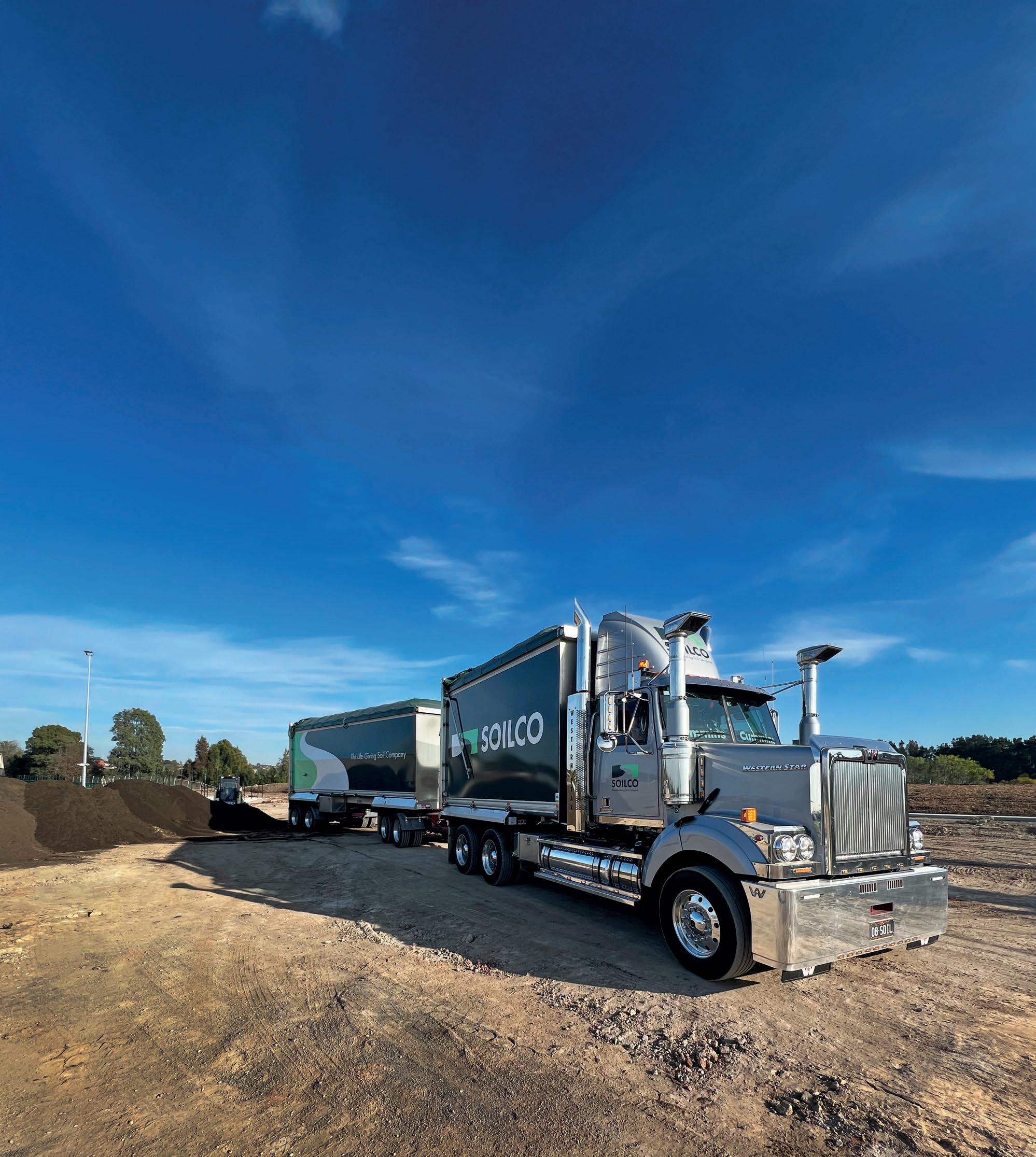
Christopher says the burden of managing those wrong materials and increasingly complex and contaminated waste streams, including PFAS and asbestos often found in mixed waste organic outputs (MWOO), falls disproportionately on recyclers, despite having minimal control over the waste’s initial composition or how it’s collected. e industry is e ectively caught between the tightening regulatory frameworks and the rising expectations for resource recovery, all while being expected to deliver contaminant-free products with little ability to in uence upstream factors.
He says many councils exhibit a risk-averse approach in their waste contracts, which often leads to contracts that permit alarmingly high contamination rates, sometimes as high as 20 per cent, or lack clear penalties for contaminated loads.
While seemingly protecting councils from risk, these clauses undermine the entire organic recycling process.
“ ey force processors to accept poor-quality feedstocks, leading to inferior end products that may ultimately end up in land lls, thus doing a disservice to the industry’s goals of resource recovery and environmental stewardship,”
Christopher says. “ is creates a disconnect where the party best positioned to manage the risk (the council, through community education and proper contracting) o oads it onto the processor, who has limited means to address the contamination once it arrives at their facility.
“Processors cannot a ord to stay in business if pressures from both regulator and increasingly contaminated supply chains continue to push from all directions.”
As the national peak body for the Australian organics recycling industry, AORA is actively advocating for the elimination of hazardous materials
and contaminants from all feedstock streams, highlighting it as a crucial factor for the success of recycling and the circular economy.
Supporting a national target of less than two per cent physical contamination in source-separated FOGO and commercial food wastes, the association has repeatedly emphasised that responsibility for contamination should not solely rest with organic processors, but rather, should be addressed at the source of the contamination – the beginning of the supply chain.
SOILCO remains heavily involved with industry associations and is increasing engagement with regulatory bodies including councils and EPAs to initiate the conversations needed for a paradigm shift. Christopher recognises that a shift requires a united vision and a mass of in uential gures across the entire waste industry.
e goal is to develop a “Waste Chain of Responsibility” framework, ensuring that all parties are educated, committed to the ultimate outcome, and incentivised to promote environmentally sound practices. Such a framework, he says, must be sustainable and create a “win-win for everybody”.
“ is means fostering an environment where every participant understands and actively mitigates risks, ensuring that valuable resources are not squandered on rectifying preventable issues,” he says.
“I’m looking for more partners that can zoom out from their own patch of the waste management industry, that can look at it broadly and ask the question, How can we collectively come together, not as adversaries, but as partners to drive the best outcomes in total?”
For more information, visit: www.soilco.com.au
Breakthrough technology from the University of Queensland promises a revolution in PFAS remediation.
Per- and poly uoroalkyl substances, or PFAS, have earned the ominous moniker “forever chemicals” for good reason: their persistent nature in the environment and human body poses a complex challenge for waste management and public health alike.
e presence of PFAS in water sources, land lls, and even biosolids demands innovative solutions that move beyond conventional approaches.
e urgency is underscored by the recent move from the Australian Government to include short-chain PFAS such as per uorobutane sulfonic acid (PFBS) in drinking
water guidelines. It’s a development that Dr Zicheng Su, Senior Research O cer at the University of Queensland’s Australian Institute for Bioengineering and Nanotechnology, hails as a great progress for the PFAS regulatory framework.
Led by Dr Cheng Zhang, Zicheng and Dr Xiao Tan are spearheading research into a novel magnetic sorbent designed to tackle PFAS contamination head-on.
e sorbent is a round-beaded, ion-exchange resin that has undergone specialised surface modi cation. Zicheng says it’s this modi cation that
is the key to its enhanced capabilities, allowing it to e ciently trap PFAS from even highly contaminated sources, and to target ultra-short chain PFAS – a notoriously di cult class of compounds to remove.
She estimates the sorbent is about 10 times more e cient and ve times more cost-e ective than the currently available commercial PFAS sorbents in the market.
Furthermore, its regenerable nature promises to lower the operational costs for the users, addressing what Zicheng says is a signi cant hurdle in widespread PFAS remediation.
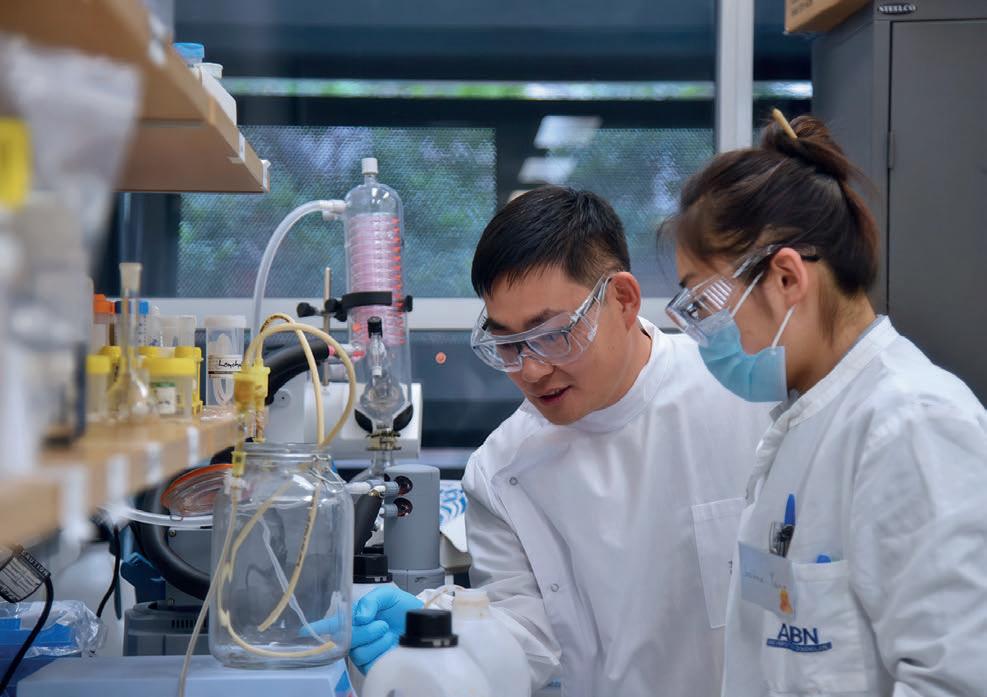
e true breakthrough, however, is this laboratory innovation is now on the cusp of real-world application.
e university team is synthesising the polymer sorbent at kilogram levels in the lab in preparation for its rst pilot deployment at Brisbane Airport. Zicheng says this pilot will speci cally target ground leachate contaminated by re ghting foams, a challenging and relevant source of PFAS.
She’s “quite con dent” the pilot stage will be successful.
“As with most eld pilots, I expect there might be engineering challenges during deployment, but we’re not concerned about the science – the sorption performance and mechanism have been rigorously validated in the lab,” she says.
e pilot is planned to run in stages, with initial data collection over three months, followed by a six-month phase, generating reports for industrial partners at each stage.
Dr Zhang has been working on the PFAS treatment for more than seven years. Taking the treatment from the lab to the eld was honed through the Commonwealth Scienti c and Industrial Research Organisation (CSIRO) On Prime program, designed to help research teams understand the potential of their research and develop pathways to impact.
“I think the greatest experience from that program is that we connected with more than 100 people in the industry related to PFAS treatment, including policy makers, researchers, industrial solution providers, and the treatment users,” Zicheng says.
“ is helped us understand what the pain points for the industry are, and what the PFAS policy is moving to. It was a great opportunity to listen to what the industry needs.
“In the lab, we focus on how e cient our solvent is, what it can do, what the variables are. rough On Prime, we learned to listen rather than simply touting the sorbent’s laboratory e ciencies.”
is extensive engagement revealed several pain points that Zicheng says existing commercial solutions struggle to address.
e rst is the challenge of very dirty, contaminated sources such as land ll leachate which often contain
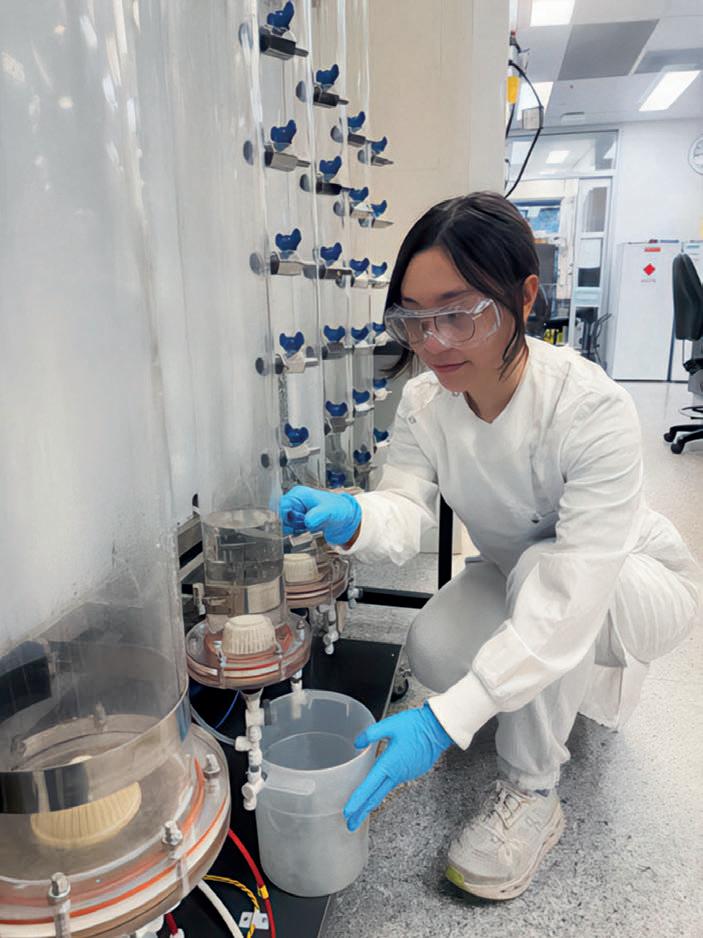
elevated concentrations of both PFAS and co-contaminants that can reduce the e ciency of conventional sorbents. Biosolids present a similar dilemma. e second pain point is short chain and ultra-short chain PFAS.
ese shorter chain compounds are increasingly used as substitutes for legacy PFAS but signi cantly harder to remove.
Finally, a practical concern for industrial application was “the clogging issue” associated with early versions of the university team’s sorbent, which were ne, irregularly shaped powders unsuitable for existing
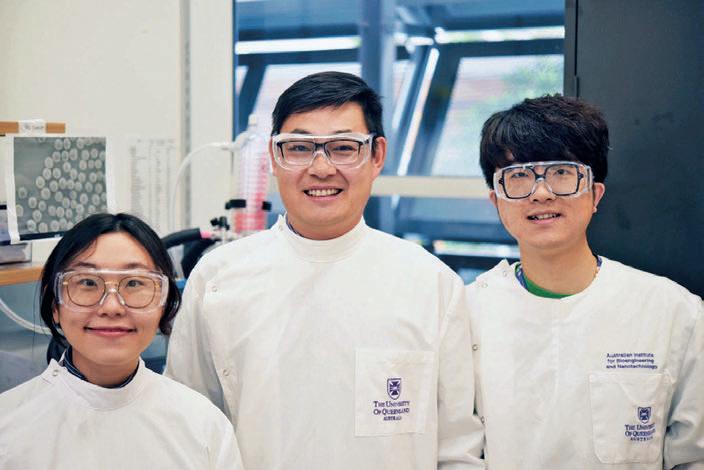
e team has addressed these challenges with ongoing research and surface modi cation techniques.
Zicheng hopes success at the Brisbane Airport pilot, with its highly contaminated ground leachate, will set a strong precedent for the treatment’s application across a spectrum of industries, including water treatment and general land ll leachate management.
“In the short term, success for the pilot program is the most important, because it’s a great leap forward in demonstrating our technology to the industry,” she says.
“For the medium to long-term, we are expecting to commercialise the technology through licensing or establishing a dedicated startup for PFAS treatment.”
She says initial responses from industry have been encouraging. Lab data consistently shows promising results for treating contaminated sources, and companies are expressing interest in integrating the university’s sorbent into their operations.
Blind tests conducted by two external companies have yielded “quite positive results”.
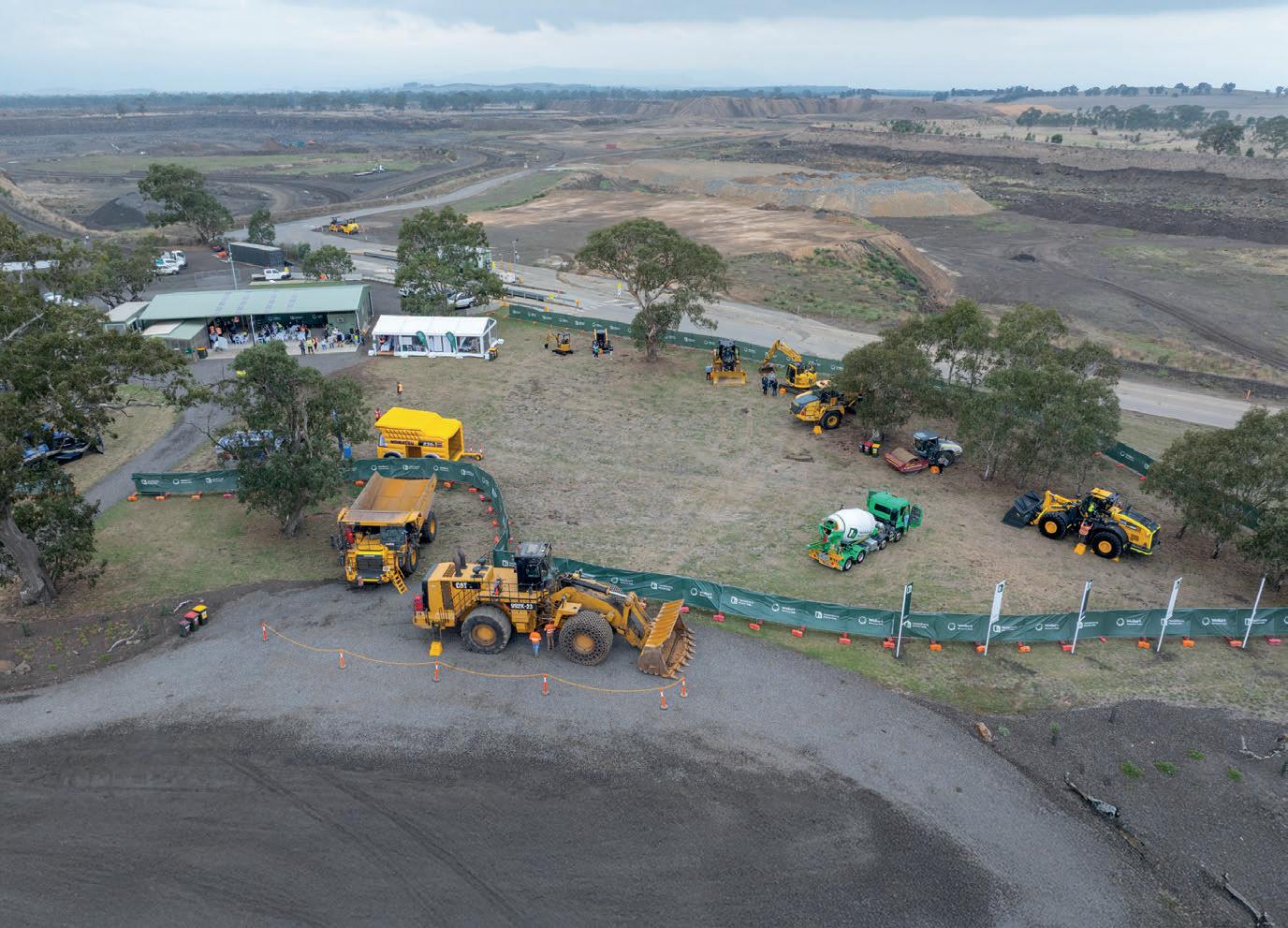
uni ue aste a ari event trans ormed a suburban landfill site into a amily un day success a showpiece or modern operation and building community trust.
Aland ll site isn’t typically the rst place that springs to mind for a family fun day, but for Heidelberg Materials, it has proven to be a successful base for fostering community connection and environmental education.
A recent “Waste Safari” event at its Wollert Resource Park on the northern fringe of Melbourne de ed expectations, turning a working land ll and quarry into an engaging, interactive experience for hundreds of visitors.
Rachael Quinlan, Development Project Manager at Heidelberg Materials, says the initiative was aimed at strengthening a relationship with the community.
“We really wanted to open our gates and encourage the community to come and have a look at what we’re doing,” Rachael says.
“Not often people get to come into a waste management facility and actually see where their waste goes. I think it was really important, as an educational piece, and for raising
community awareness about what happens when they put their waste in the bin.”
e day was an undeniable triumph – despite uncooperative weather – with 346 people registered, reaching 87 per cent capacity.
Attendees embarked on 30-minute bus tours hosted by “Resource Rangers”, o ering a visual learning experience through the site. e renewable energy section, that generates land ll gas to power a data centre, was a crowd favourite.
An exhibitor hall including collaborations with community groups, local council, and industry associations such as the Victorian Waste Management Association, created “a real buzz around the place” with many environmental synergies.
Families enjoyed interactive mobile plant displays, a jumping castle, a simulator, face painting, and even received branded high-vis vests and activity guidebooks.
Rachael says post-event feedback was overwhelmingly positive, with a 4.7 out of 5-star rating from participants.
“We sent out a feedback survey following the event, and there was only one negative comment – and that was that the day had nished too soon,” she says.
More than 75 per cent of visitors were local residents, 91 per cent said they would attend again, and nearly a third were children – a key demographic for waste education.
Rachael says the day achieved its objectives.
“We drove up our community contact database, we enhanced engagement in terms of people feeling like they can come and talk to us directly if there’s an issue or concern, and I think we built our social license to operate.
“Overall, I would say it was a success.”
e Wollert Resource Park is no ordinary site. Formerly known as the Wollert Quarry and Renewable Energy Land ll, owned and operated

by Hanson, it was rebranded in 2024 following the company’s acquisition by Heidelberg Materials in 2007.
It currently has a quarrying operation, a land ll, and a biogas power facility.
e quarry supplies basalt products for a variety of uses, including the construction of roads and houses, and concrete for infrastructure projects. It’s been operating since the late 1970s.
e land ll started operating in 2000 and accepts thousands of tonnes of waste each year including municipal, commercial and industrial, and construction and demolition.
e cells are in previously quarried parts of the site and are designed to help contain leachate.
A capped portion of the land ll site has been transformed into a solar farm, and the operators have pioneered phytocapping in Australia – a process that uses deep beds of locally sourced soils, planted with indigenous grasses, bushes and trees to rehabilitate and improve biodiversity of former land ll cells.
Rachael says that despite the site’s long history, it’s important to continue to build trust and social license.
Opening the gates to the site for public viewing helps to demystify operations and foster community con dence, particularly as urban areas encroach on long-standing sites and given the waste industry’s historical reputation.
“If we want to operate to the best of our ability, we need the community to be on board and to trust us as operators,” Rachael says.
“We just really wanted to build that trust with the community and allow them to come onto our site and see rsthand how we operate, and that we do care about the environment.
“Environmental compliance is extremely important to us, and that’s something we’re very proud of.”
Heidelberg Materials plans to host future Waste Safaris, and encourages private tours for community organisations and schools, ensuring ongoing dialogue and transparency around the “dynamic site”.
In an era of increasing environmental scrutiny and urban expansion,
compliance is no longer just good practice – it’s essential for maintaining public con dence.
And public con dence is key for Evan Kyriakopoulos, Operations Manager at Heidelberg Materials, Australia.
He says some common misconceptions about land lls and waste sites, are fuelled by outdated imagery.
“Whenever you see land lls portrayed in media, they’re showing ird World sites. ey’re not showing a site that’s well managed and operated,” Evan says.
“ e Waste Safari, for us, is not only about making people a bit more aware of waste management and their impact, but also their understanding that this facility exists and that there are no big secrets.
“First and foremost, we want them to understand who we are and that we’re actually a good operator, that we’re someone that can be trusted. at’s the biggest thing for us.”
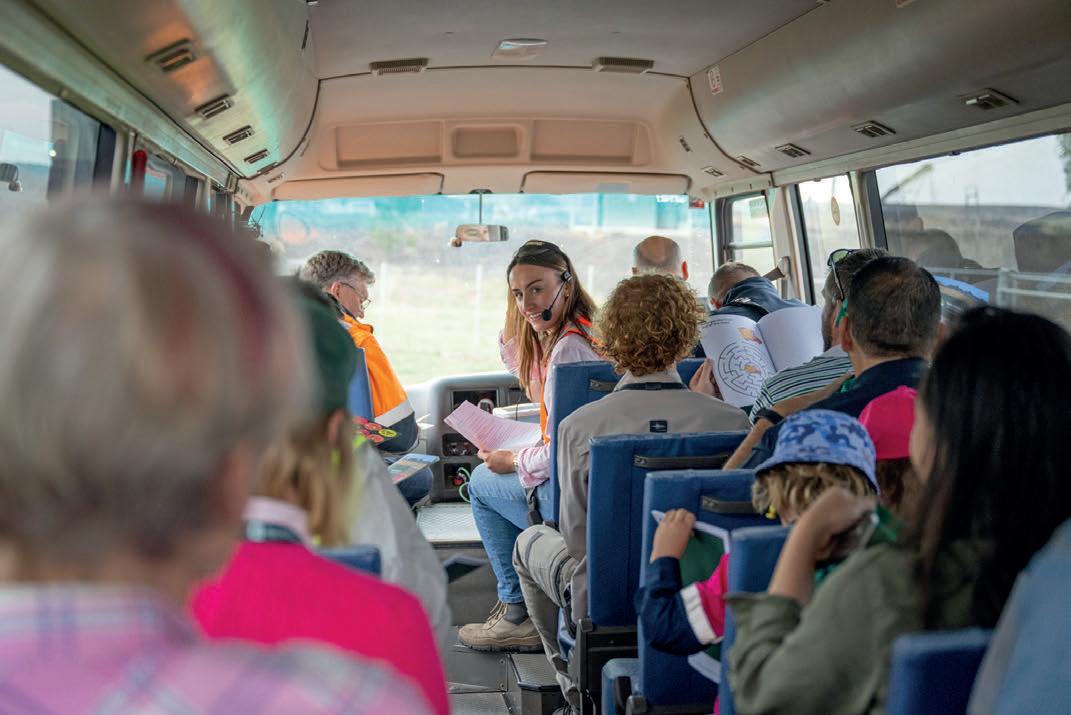
The inaugural year of Blue Phoenix’s incinerator bottom ash plant marks
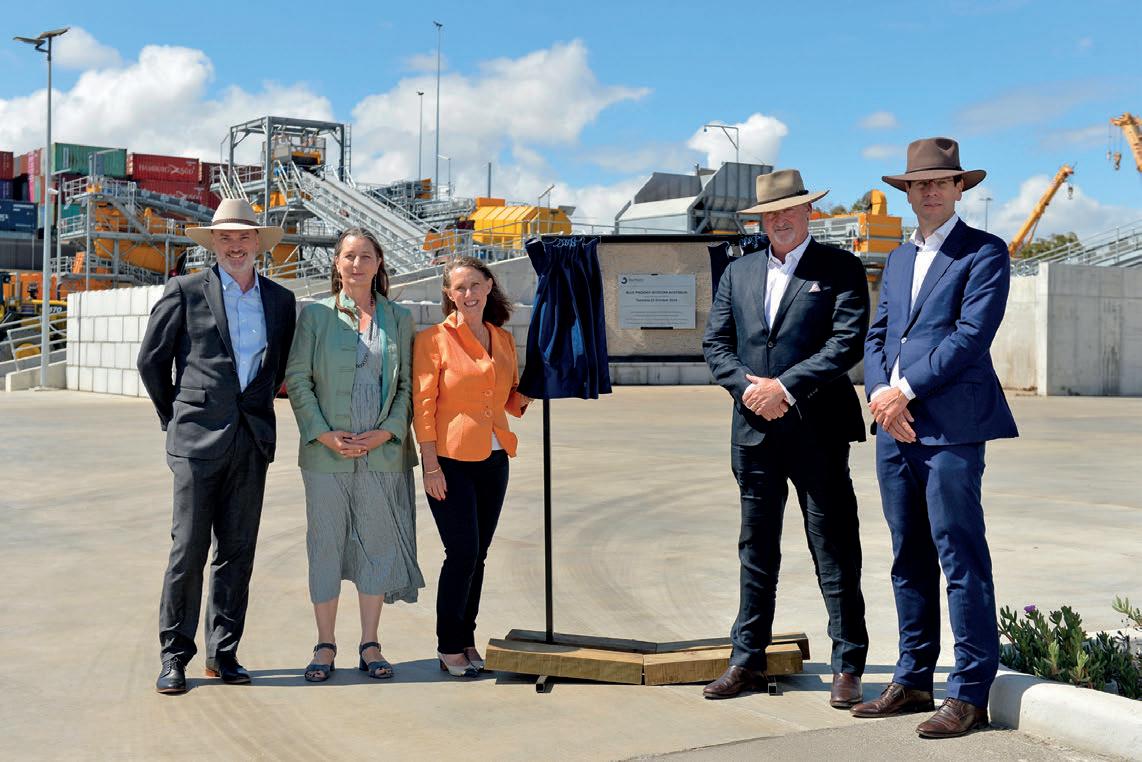
Chris Gee, Blue Phoenix Australia Site Manager, describes the rst year of operation for the company’s incinerator bottom ash (IBA) plant in Western Australia as “incredible.”
In its rst 12 months, the plant has processed 100 per cent of all IBA received, achieving a 95 per cent recovery rate – none of the processed material has gone to land ll – and the team is already planning upgrades to the processing plant, particularly to enhance the extraction of stainless-steel and aluminium, ensuring a cleaner nal product.
Chris says the plant’s success represents a signi cant stride toward sustainability and the circular economy.
“We’re now a big part of the circular economy and driving sustainability,” he says. “We are recovering and reusing those materials that would otherwise go to land ll. To be a part of that is absolutely fantastic.”
e facility, the rst of its kind in the Southern Hemisphere, was o cially opened in October 2024. It processes IBA from energy-from-waste partner Acciona, transforming it into valuable secondary materials such as aggregates, for use in the civil construction industry.
Chris says the plant completed commissioning and achieved optimum running for material recovery relatively quickly.
Recognising that production e ciency required early intervention, the team identi ed and engineered out crucial downtime issues inherent in the initial build, establishing a maintenance program that ensures consistent operation. is allows the plant to run production four days a week, with the fth day dedicated entirely to maintenance.
e transition, however, was not without its unique challenges,
particularly those presented by the Australian climate. e relentless high temperatures of the Western Australia summer, with consistent high 30s and 40s, posed an operational hurdle.
“Heat a ects the material, causing it to dry out into a ne, dusty state,” Chris says.
It’s a stark contrast to the European experience, where summer heat is eeting. Now entering its rst winter, the plant faces the opposite problem: wet material causing blockages and operational issues.
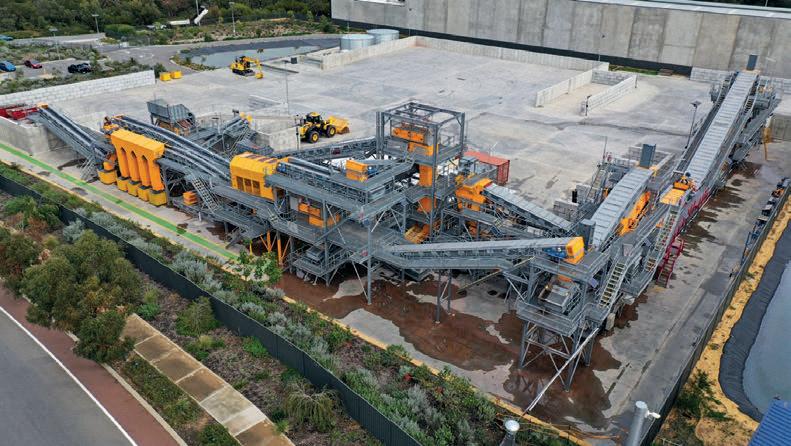
Chris says managing this material consistency requires constant attention and adaptation, but the team has Blue Phoenix’s global knowledge and decades of experience to draw on.
“We’ve seen probably 90 to 95 per cent of the issues at other plants over the years,” he says. “It’s nothing di erent to what we’ve done before, and we’ve had some great tools on site.”
Personnel training also proved tough. Many new employees, some fresh out of school, had never seen a processing plant before, let alone one speci c to IBA. Teaching new personnel how to maintain, clean, and recognise issues unique to the Blue Phoenix patented technology was a de nite challenge.
Despite these operational hurdles, the plant’s performance metrics in its rst year have been remarkable. Chris says the response from industry and the local community has also been positive.
Blue Phoenix has actively engaged with local businesses, providing education on its processes and the material it recovers. ere have also been several industry tours of the facility.
“We had the Blue Phoenix Chief Executive O cer here in October, and when he saw the product we were producing after commissioning, he was shocked,” Chris says.
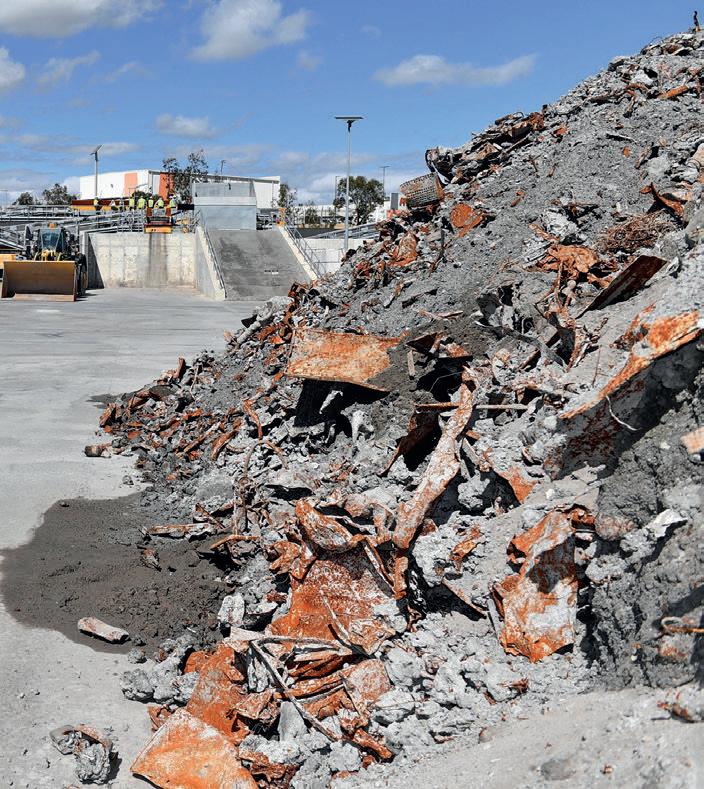
“We’ve made some pretty amazing material to go back into sub-base and road materials.”
e Blue Phoenix facility in Western Australia is not just an operational success; it is viewed as a global benchmark and is expected to serve as a blueprint for future Blue Phoenix projects worldwide, continuously improving with each new iteration.
“It’s certainly the best plant I’ve ever worked on,” Chris says.
“I thought the rst year would be a lot
Australia site and bid for new contracts, potentially bringing in an additional 50,000 tonnes.
“We’ve noticed an increase in stainless-steel and aluminium,” Chris says. “We want to upgrade the plant to extract this metal and have a cleaner and better product at the end of the process.”
For more information, visit: www.bluephoenix-group.com

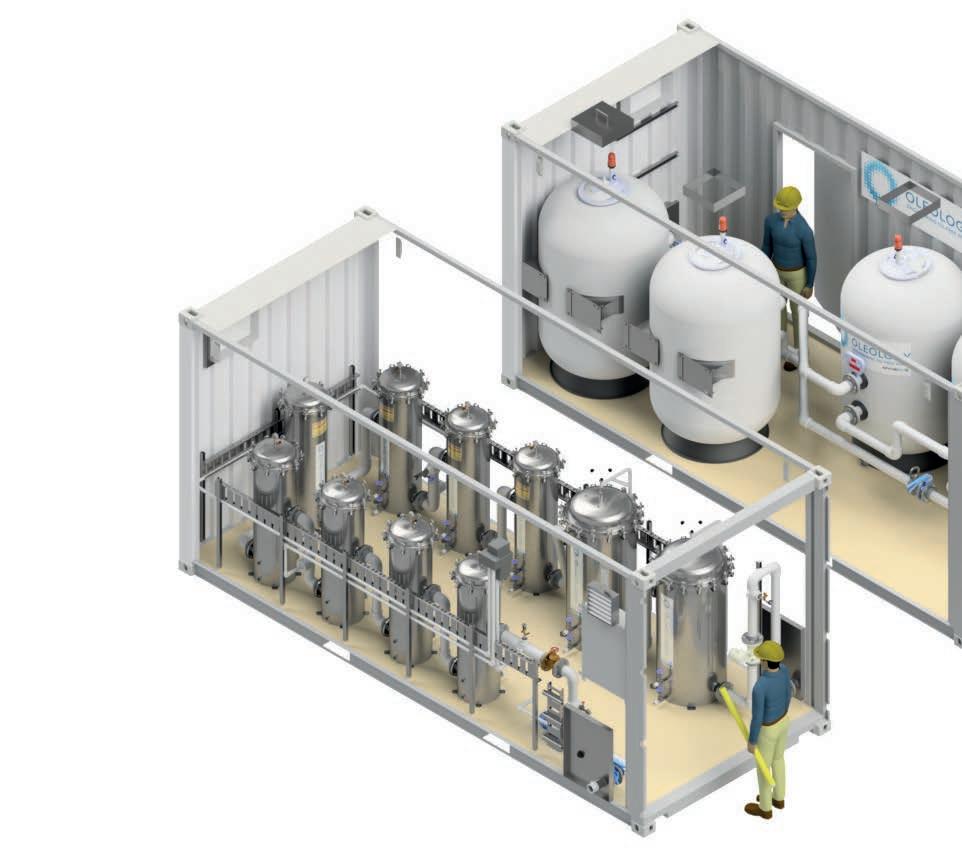
SEQUENCED FILTRATION:
REMOVAL TO "NON-DETECT"

1,000,000 LITRES /DAY (SHOWN ABOVE)
PROVEN REMOVAL ALL PFAS
REMOVES FUTURE LIABILITY
SAFE AND FAST: INSTALLATION MAINTENANCE
REDUCE SITE COSTS:
DRY WASTE
REMOTE CONTROLLED SAVE OPERATOR TIME
SMALL FOOTPRINT
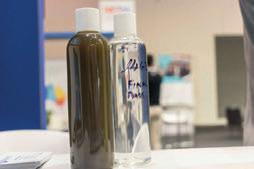
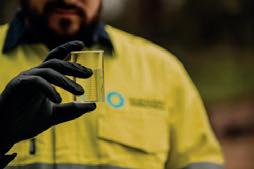
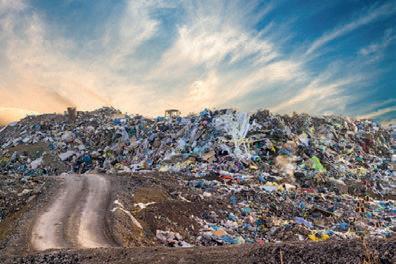



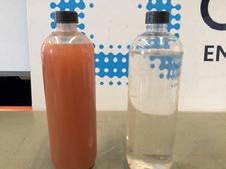



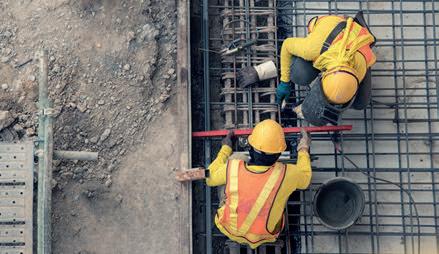
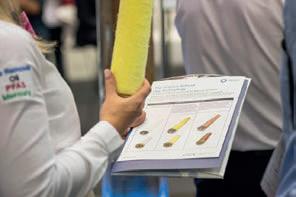


EcoCycle leads Australia’s push for safer mercury disposal, launching a new encapsulation plant to permanently retire this persistent toxic legacy.
Mercury may be a naturally occurring element, but its impact on human health and the environment is anything but natural.
From old thermometers and dental llings to industrial gauges and button cell batteries, mercury lingers in many corners of modern society.
Now, as international attention turns to the upcoming sixth Conference of the Parties (COP-6) to the Minamata Convention on Mercury (an international treaty designed to protect human health and the environment from the adverse e ects of mercury), Australia faces a timely question: are we doing enough to deal with this toxic legacy?
For EcoCycle, Australia’s most experienced mercury recycler, the answer is clear.
EcoCycle has long been at the forefront of mercury recovery, o ering end-to-end solutions to safely collect, treat, purify, and retire mercury from a wide range of sources.
With momentum building ahead of COP-6 the company is urging stronger national regulation, tighter compliance standards, and a more coordinated approach to mercury waste management.
Mercury has historically been used in a wide array of household, medical and industrial products – compact uorescent lighting, thermostats, mercury switches, sphygmomanometers
(used to measure blood pressure), button cell batteries and dental amalgam are among the most common.
While many of these items are slowly being phased out, thousands of tonnes of mercury-containing waste still circulate in the economy and environment.
According to Nick Dodd, General Manager at EcoCycle, the issue is not just historical.
“Even today, many dental clinics still use amalgam for restorative procedures. Amalgam llings, often referred to as silver llings, will remain present in the population for decades to come,” he says.
“As these are gradually removed or replaced it is essential to prevent mercury-bearing waste from entering our sewer systems, waterways, and harming the environment.
“Mining, oil and gas operations also continue to generate mercury as a by-product, and older infrastructure remains a ticking time bomb. e problem hasn’t gone away – it’s just changed form.”
EcoCycle provides collection and processing services for mercurycontaining waste from a range of sectors, including dental surgeries, hospitals, laboratories, mines and industrial facilities. It also services local councils and state governments tasked with managing public dropo programs.
ere are a variety of amalgam traps and ltration systems designed to capture mercury-bearing waste generated during dental procedures, particularly from the drilling of old amalgam llings.
EcoCycle supplies and services the full range of approved products available on the market, including its own ECOASO4 unit which, Nick says, for about $800 per year represents an a ordable and e ective solution to safeguard the environment and ensure compliance with best practice waste management.
At the heart of EcoCycle’s future o ering is a mercury encapsulation plant currently under development at the company’s site in Kwinana Beach, Western Australia.
Scheduled for commissioning by the end of 2025, the facility will incorporate proven German technology, enhanced with local innovations to deliver a world-class mercury retirement operation for Australia.
Once operational, the system will chemically bind liquid elemental mercury with sulphur in a controlled, vacuum-sealed environment, forming mercury sulphide (cinnabar) a non-toxic

and environmentally stable compound. e resulting product will be safe to transport and store, eliminating the risk of mercury vapour exposure or leakage.
Nick sees this as a transformative step.
“With the new encapsulation plant in Western Australia, we’ll have a permanent, best-practice solution for the retirement of mercury. It’s an investment in national capacity, designed to reduce risk, ensure compliance, and support Australia’s obligations under international conventions.”
Globally, mercury is regulated under the Minamata Convention on Mercury
use in dental amalgam. At COP-5 in 2023, delegates agreed that instead of immediately phasing out amalgam, parties must submit national plans outlining how they intend to reduce its use. ese plans will be reviewed at COP-6, to be held in Geneva in November 2025.
Australia’s Department of Climate Change, Energy, the Environment and Water (DCCEEW) has indicated that formal consultations on the national submission will begin in August 2025.
Until then, responsibility for enforcing correct amalgam disposal lies with state environmental regulators and health departments, with the Australian
mandated ban or regulatory framework that requires the collection and safe disposal of all mercury waste, including dental amalgam, would align Australia with best international practice, and what’s now being practiced in the United States, United Kingdom and European countries.”
As of 2023-24, there are more than 19,800 general dental practitioners in Australia, according to the Australian Health Practitioner Regulation Agency (AHPRA).
While some have transitioned to mercury-free alternatives, many still

and collection services across all states and territories.
e company also supports government e orts to prepare for stricter international obligations, providing technical input into draft policies and participating in industry consultations.
e 2024 Progress Report from the Minamata Convention Secretariat emphasises the importance of Best Available Techniques (BAT) and Best Environmental Practices (BEP) for mercury release control. At COP-5, parties adopted comprehensive guidance on mercury releases to land and water, including speci c measures for dental amalgam waste management.
While not all elements are mandatory, they o er a strong benchmark. e
guidance calls for mercury separators compliant with ISO 11143, sta training in waste minimisation, and the use of approved transport and recycling services.
“ at’s where EcoCycle already excels,” says Nick. “We’re ahead of the curve on containment, transport and compliance. e technology is coming. e capacity is coming. What we need now is the policy framework to make it universal.”
As COP-6 approaches, the focus will turn to how countries are meeting their commitments and what additional steps are needed. For Australia, Nick says this could mean setting national collection targets, introducing mandatory product stewardship, or banning mercury use in certain applications.
For the private sector, it’s also a moment to lead. EcoCycle is calling
on industry groups, waste generators and policymakers to collaborate on creating a coherent mercury recovery system, backed by data, infrastructure and regulation.
“ e days of turning a blind eye to mercury are over,” says Nick. “We know the risks. We know the solutions. COP-6 is our chance to get serious and protect future generations from a toxic legacy that never should have lasted this long.”
He says that as EcoCycle continues to invest in infrastructure and policy engagement, the pathway to national mercury retirement becomes clearer. With the right commitment and coordination, Australia can ensure mercury remains where it belongs – safely contained, and rmly in the past.
For more information, visit: www.ecocycle.com.au









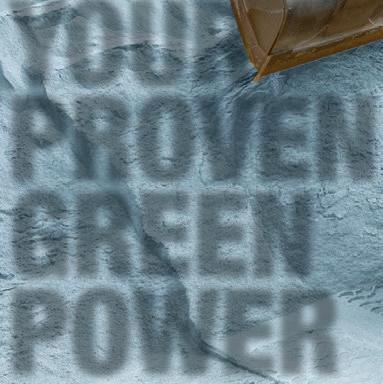
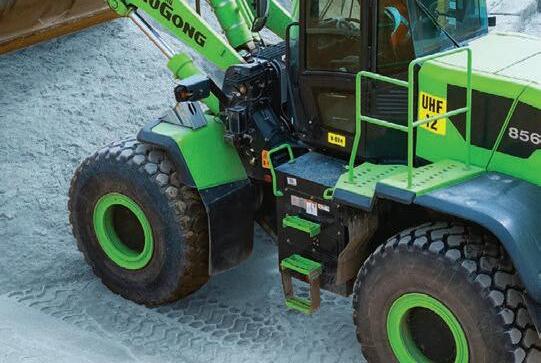



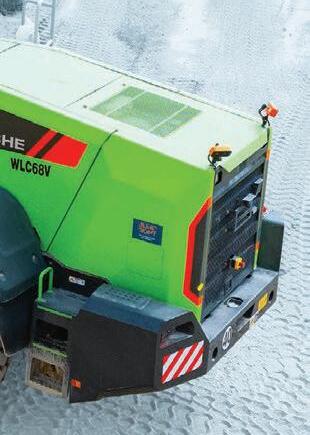

A single TANA shredder has sparked Liverpool City Council’s pioneering Circular Economy Centre and micro-factory.
In the world of local government waste management, a single piece of equipment rarely sparks a revolution.
Yet, for Liverpool City Council,
Tim Pasley, Liverpool City Council’s Resource Recovery Manager. is initiative wasn’t born from an environmental mandate alone, but from a pragmatic assessment of investing in the infrastructure to manage the waste internally.

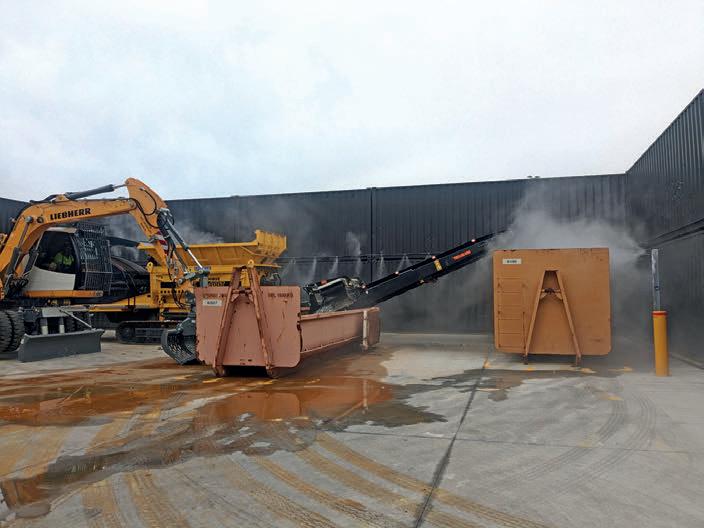
Historically, Liverpool City Council collected and land lled thousands of illegally dumped mattresses annually. e practice was expensive – up to $137 for each mattress – and unsustainable with land ll in the Sydney basin expected to expire by 2032. e cost of having mattresses taken away by a private contractor for recycling was close to $800,000 a year.
But what began as an investment in a shredder, quickly evolved into a vision to close the loop on mattress waste. e council successfully secured an Environment Protection Authority grant and implemented a localised waste strategy, which was quietly executed over four years. On November 16, 2023, the council unveiled its latest weapon in land ll diversion – the TANA Shark.
A ectionately known as “the Croc”, the TANA Shark provided the mechanical capacity, shredding mattresses and liberating the ock – a mix of textiles and foam – that was previously unusable. is material is now the feedstock for a groundbreaking micro-factory established at the Cowpasture Road facility, poised to become the region’s Circular Economy Centre.
e micro-factory is transforming mattress ock into high-value products through an innovative partnership with the University of New South
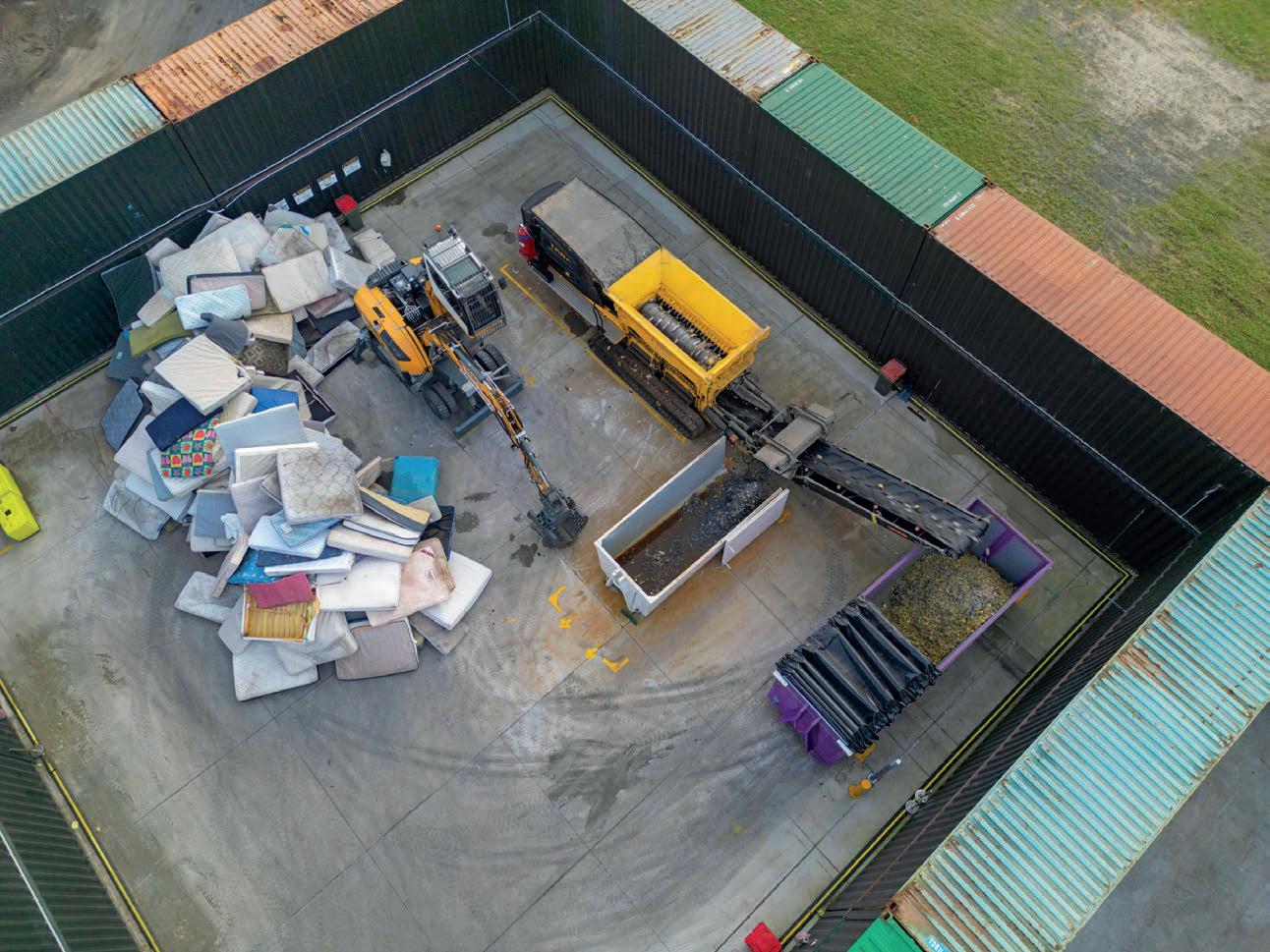
Wales (UNSW). Using UNSW’s intellectual property, Liverpool Council is embedding the ock into Green Ceramics and working on developing new technologies that aim to incorporate a higher percentage of mattress content.
e ultimate aim is to embed the circular economy directly into the council’s operations and infrastructure.
e council plans to use the Green Ceramic tiles – made from recycled mattress content – in its own capital works projects.
Tim says the rst application is a new education centre at the 600 Cowpasture Road site, where 160 square metres of the tiles will be installed.
“Visitors to the centre will be literally walking on the product, providing a tangible example of the council’s commitment,” he says.
He says the success of the TANA shredder and the resulting micro-factory has resonated across the region.
While Liverpool City Council is not a private company focused on business
development, its vision and the science behind its operations have drawn interest from neighbouring councils.
“We’ve got Wollondilly, Penrith, and Campbelltown signed up, and a number of private companies, sending mattresses to us for processing,” Tim says.
“When people use our mattress recycling facility, they are actively contributing to the circular economy which aligns with state government targets of 80 per cent diversion from land ll by 2030.”
e council is actively connecting residents, particularly school groups and families with the facility, allowing them to see where their mattresses are going.
Tim hopes this unique approach will help build community pride and foster understanding of the circular economy in action.
Looking ahead, the vision for the Circular Economy Centre is ambitious.
e current facility processes up to 78,000 mattresses annually, but the council is aiming to eventually
process up to one million mattresses a year with the addition of two more TANA shredders. It is working to lift development application restrictions to maximise processing capacity.
e collaboration extends beyond manufacturing; Liverpool Council is co-funding research and providing a unique learning experience for UNSW PhD students and local trainees, hoping to create jobs of the future.
“We’re trying to do things a little bit di erently here,” Tim says.
“ e TANA Shark pretty much unlocked all of this. We were aiming just for the shredder to begin with, and then once we had it, all these other opportunities started to come forward.
“ e Croc is the bridge in the recycling process: We collect the waste; we process it, and then the Croc’s the bridge to the manufacturing hub that we’ve created.”
For more information, visit: www.tana.com.au
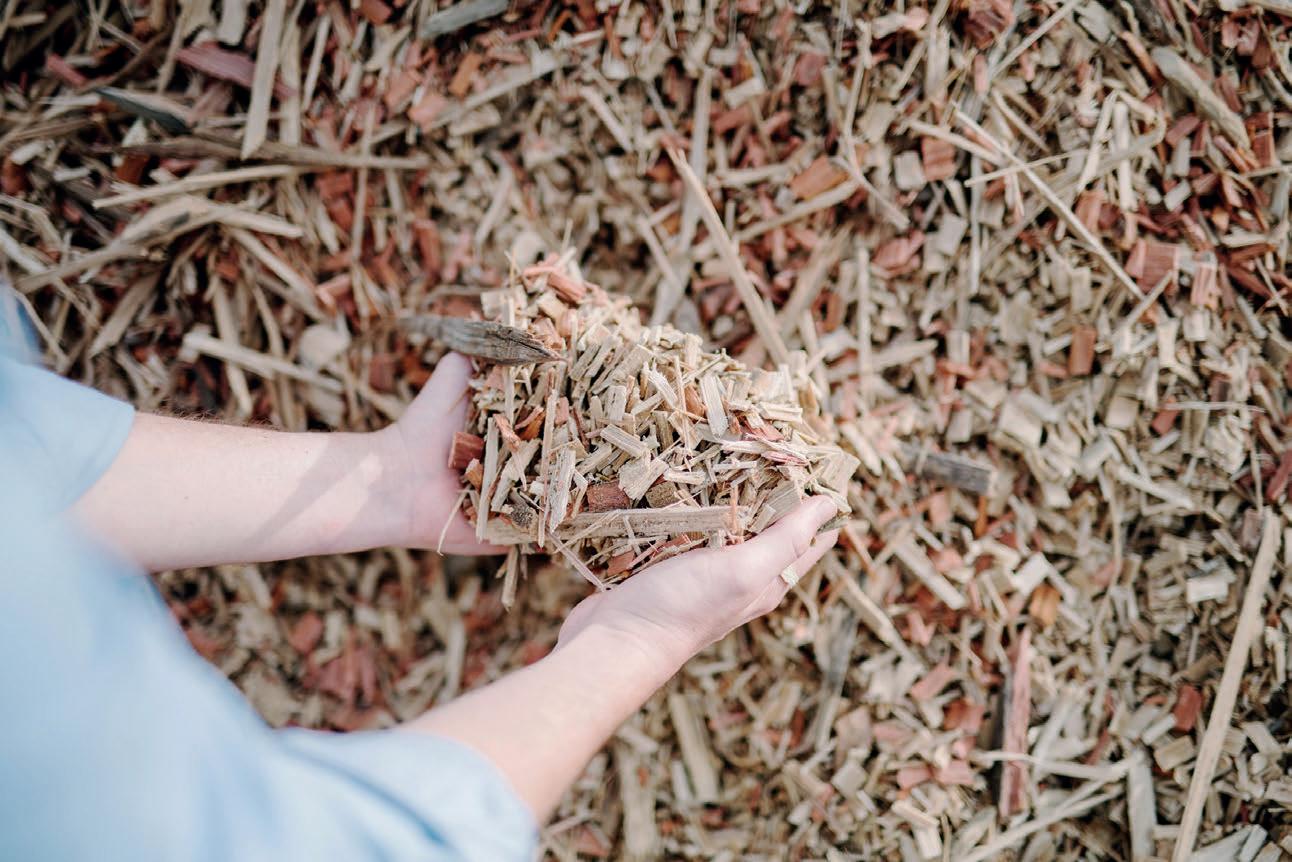
The latest Australian Organics Recycling Association report reveals the states’ performance and highlights the need for harmonised policy and infrastructure investment to meet the growing volume of organics.
Unless the industry can continue to grow at a faster rate than population growth, organics material recycling rates will continue to decline,” says John McKew, National Executive O cer of the Australian Organics Recycling Association (AORA).
“ ere is a profound need to ensure the Australian organics recycling industry can continue to grow and keep pace with the growing volume of feedstock, either via existing operators expanding or attracting new entrants,” he says.
“Unless this occurs, the diversion of organics away from land lls cannot keep pace with the material being generated.”
He paints a picture of caution for the Australian Organics Recycling Industry (AORI), following the release of the third edition of e Economic Contribution of the Australian Organics Recycling Industry (2023-24) report.
Produced by Australian Economic Advocacy Solutions (AEAS), the report assesses the organics industry’s economic impact and capacity to meet increasing recycling targets.
As with previous editions, this report was produced to determine the economic and environmental bene ts of the organics recycling industry to the Australian and all state economies.
It shows that with national population growth, driven predominantly by immigration coupled with interstate migration, organics recycling rates have, albeit marginally, declined.
South Australia had the highest organics recycling rate at 78.8 per cent, followed by the ACT at 68.1 and New South Wales (57).
Victoria was the next best with a recycling rate of 49.5, followed by Queensland (38.2), Tasmania (37.8)
and Western Australia (33.6). e Northern Territory had the lowest organics recycling rate at 19.0 per cent.
In comparison, in 2021-22, South Australia’s recycling rate was 79.4 per cent, the ACT sat at 68 per cent, followed by New South Wales (57.9), Victoria (50.3), Queensland (39.2), Tasmania (34.8), Western Australia (34.5) and Northern Territory (19.7).
Tasmania is the only state to have recorded an increase in organics recycling in the past nancial year.
John says some actions can be taken by governments to support the industry.
“Leading those actions is a determination to harmonise regulations across states and improve the planning process for new or expanding facilities.
“Further, ensuring we do not overburden the industry with regulation
it has little or no control over, speci cally contamination of forever chemicals such as per- and poly- uoroalkyl substances (PFAS).”
Organic material recycling is driven by a number of factors, including population growth, economic growth, technological change, access to recycling markets, local government collection changes and commonwealth and state government waste and carbon reduction policies.
Across the decade, AORI’s recycled material has grown by 0.9 per cent each year and compares to Australia’s average population growth rate of 1.5 per cent over the same period.
In 2023-24, Australia is estimated to have produced 14.9 million tonnes of organic waste (about 550 kilograms per person) of which, 5.7 million tonnes was sent to land ll, 7.7 million was recycled and 1.6 million tonnes recovered through energy.
According to the report, Australia’s overall organic material recycling rate in 2023-24 was 51.4 per cent, (7676 kilotons of recycled organic material) compared to 52.3 per cent in 2021-22.
John says the drop re ects a higher number of tonnes recycled but a comparatively higher amount of organic material generated.
He says the National Waste Policy
“AORA plans, as part of the next edition of its Australian Organics Recycling Industry Capacity Assessment in 2025-26 to undertake additional analysis on progress toward the NWPAP target,” he says.
“If, as is evidenced from the third edition of e Economic Contribution of the Australian Organics Recycling Industry (2023-24) report, organics recycling rates have largely declined, we need to understand the reasons for this and the potential strategies to mitigate the situation.
“We know population growth is contributing to greater volumes of organic material being available for recycling and that situation will continue as long as population growth remains.”
John says it is highly likely that as food organics, garden organics (FOGO) services continue to be rolled out by local councils around the country that also will result in an increase.
“ e question then is how do we meet that growth in organic material,” he says.
John says the Federal Government’s Interim report, Australia’s circular economy: Unlocking the opportunities released by the Productivity Commission in March 2025, provides relevant considerations to this question.
e report suggests harmonising waste classi cations, kerbside recycling
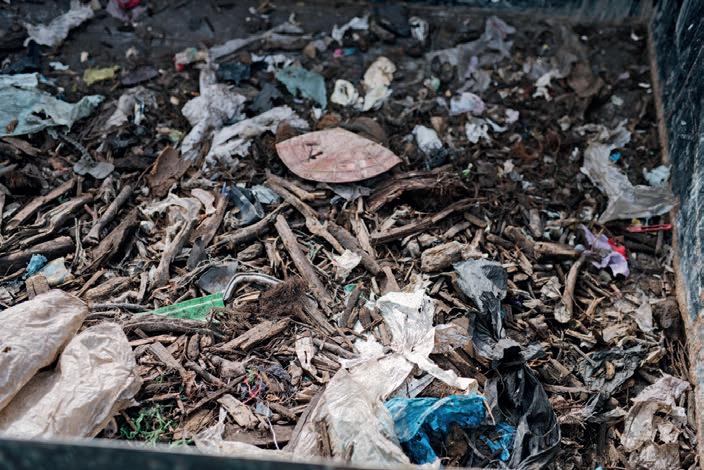
regulations, either through improved interjurisdictional arrangements or a new body.
It also states governments could work with industry associations, research bodies and/or community organisations to coordinate initiatives. is could include o ering information on existing services, trialling new platforms, or facilitating connections between businesses for circular opportunities.
e Productivity Commission is seeking further input on how governments can use place-based circular policies to support economic, social and/or environmental objectives such as reducing regulatory burdens, linking circular objectives to precincts or regions with related objectives (net zero) or service delivery (waste management and recovery).
e Productivity Commission is proposing that an expanded set of indicators could include environmental and economic outcomes from circular activities, so that the data can be used to identify opportunities and measure improvements made.
John says all suggestions are “worthy pursuits”.
“AORA has long championed a need for greater harmonisation of policy and regulation across states,” he says.
“Especially as we begin to see an increasing number of organics processing businesses continue to grow across jurisdictional borders.”
He says it’s essential to improve planning processes to facilitate timely and less burdensome infrastructure investment across all states.
“Without ongoing investment by the AORI to grow the industry to meet the increasing growth in organics material, recycling rates will continue to decline and that is harmful for both the economy and the environment.”
For more information, visit: www.aora.org.au
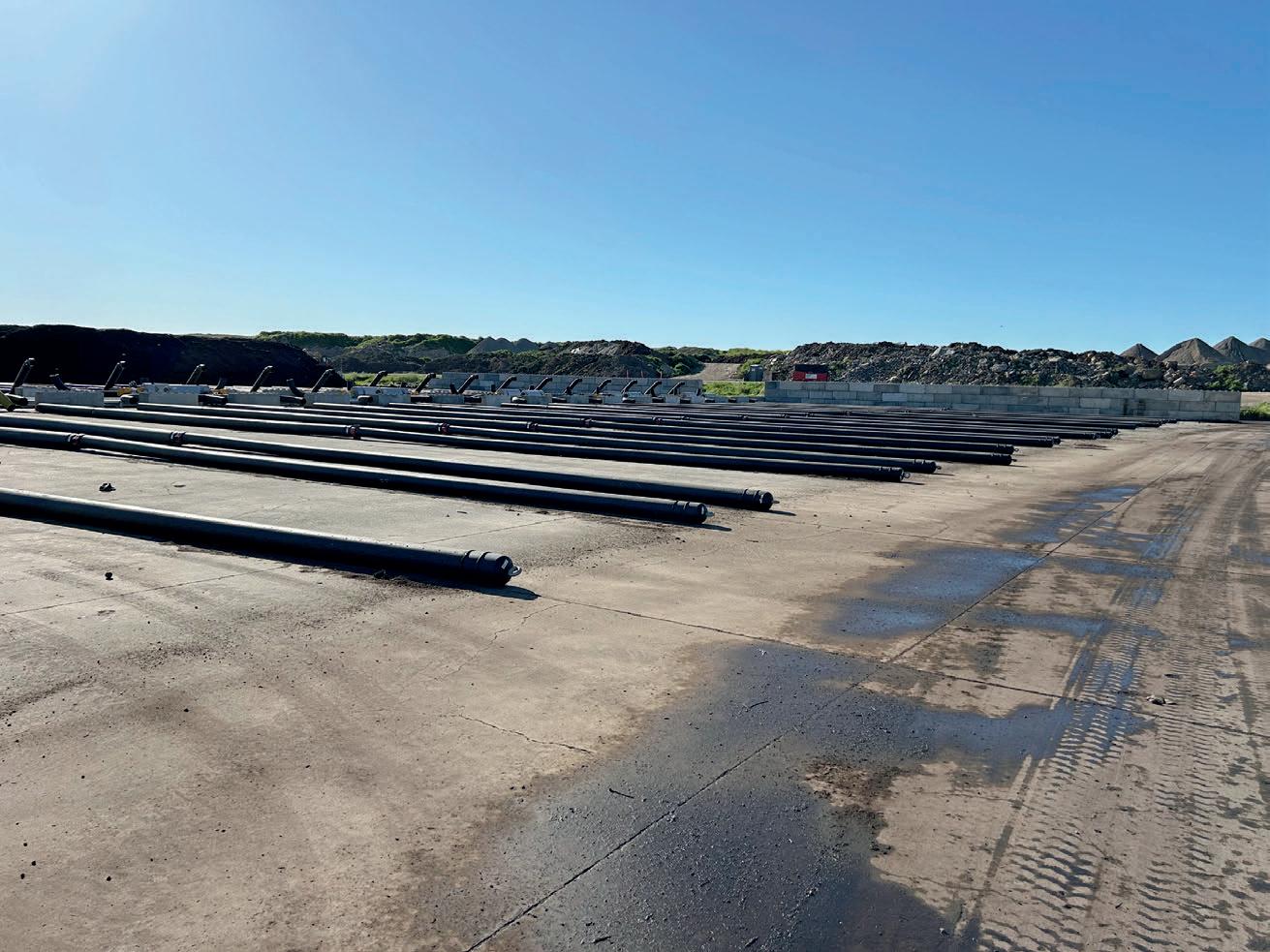
As Australia aims for ambitious organics diversion goals; the spotlight is on innovative composting. Aerated Static Pile (ASP) systems, enhanced with engineered covers, are revolutionising the future of FOGO composting.
Halving the amount of organic waste sent to land ll and to roll out food organics and garden organics (FOGO) collection services to all metropolitan households and businesses by 2030 is a key component of Australia’s National Waste Policy Action Plan.
But as the 2030 deadline looms, pressure is mounting to adopt scalable, reliable composting technologies for FOGO.
Scott Woods, Founder and Chief Executive O cer of Sustainable Generation, says concrete tunnels and anaerobic digestion often fall short due to their complexity, high capital costs, and operational challenges.
Aerated static pile (ASP) composting has emerged as a practical, cost-e ective, and high-performing solution.
ASP BASICS
ASP composting relies on forced aeration to maintain aerobic conditions and optimise biological activity. ere are two primary methods: negative
aeration, which uses simple timed motors to pull air through the pile and exhaust through a bio lter; and positive aeration with temperature feedback. Developed in the 1980s, this method pushes air into the pile and uses real-time temperature monitoring to regulate blower activity, improving process consistency.
Both approaches typically require a biolayer cap – 250 millimetres or more of woodchips or nished compost – to manage odours and retain heat.
Scott says this traditional approach adds operational complexity and does not always deliver consistent results.
e latest evolution in ASP systems involves engineered membrane covers that are semi-permeable, waterproof, and breathable.
“ ese advanced systems o er invessel performance without the cost and complexity of enclosed facilities, consistently outperforming basic biolayer cap systems when evaluated on a true apples-to-apples basis,” he says.
Biolayer caps are labour- and equipment-intensive. Applied on top of the compost mix recipe pile as a 250-to-500-millimetre layer, it provides insulation and odour control but requires a consistent application and frequent watering.
Inconsistent cap thickness, improper application, or failure to apply the cap altogether can lead to odour problems and ine cient composting.
Brian Fuchs, Global Business Specialist at W.L. Gore & Associates, says engineered covers o er a visible, physical barrier that is easy to deploy and remove.
He says that with a more than 25-year track record, GORE Covers provide superior odour control, separate stormwater from leachate, regulate pile temperature, retain moisture, reduce greenhouse gas emissions, and improve compost quality – all while simplifying operations and reducing risk.

Two biolayer-based ASP designs – low tech ASP with aerated oors using above grade piping, and extended mass bed ASP’s using in-ground sparger or trenching systems – are currently used for FOGO processing.
Brian says both can face performance limitations.
“ ey can only handle up to less than 15 per cent food organics, digestate, or biosolids by weight before odour complaints arise and require roofs to separate stormwater and leachate,” he says.
“Moisture loss through the cap demands a dedicated watering system, and the cap reduces pile volume (thus capacity), consumes nished compost that could otherwise be sold, and introduces ongoing labour and operational costs.
“Uniformity in cap application is di cult to monitor, and inconsistencies compromise performance and emissions compliance.”
Brian says recent failures at FOGO facilities using aerated oor and mass bed ASPs reveal several recurring mistakes including:
Underestimating feedstock complexity – assuming ASPs can handle high food organics concentrations without adequate odour control.
Inadequate cap application –skipping the cap or applying insu cient depth (250 millimetres compared to the required 500 millimetres).
Ine ective moisture management – watering systems fail to penetrate the pile, drying out the core and requiring frequent turning.
High energy consumption – negative ASPs and single-blower manifold mass bed systems run continuously, consuming signi cant power and requiring complex components such as
actuators, and variable frequency drives, increasing maintenance risks.
Not all engineered fabric covers are the same. e performance of the GORE Cover system, supplied by Sustainable Generation, is setting a new standard.
Scott says proven reproduceable outcomes include 90-99 per cent odour reduction for a recipe mix of up to 50 per cent (by weight) of food, biosolids, digestate, and other di cult feedstocks such as animal waste and mortalities. e results are backed by third-party, independent air emission studies.
“ e GORE Cover does not require a roof for separation of stormwater from leachate, delivering lower capital costs when compared to other ASP systems,” Scott says.
Among other bene ts, the cover prevents the spread of litter from feedstock contamination. Because the cover is sealed to the surface, pressurization occurs and prevents channelling and anaerobic pockets, delivering additional performance.
Sustainable Generation’s positive aeration with oxygen control and monitoring also provides energy e ciency by turning the blower on
and o to meet the oxygen demand of the microorganisms that perform the composting process.
Because the GORE Cover is waterproof, moisture in the pile carries through the process, eliminating the need for a watering system.
ere are currently more than 400 installations of the GORE Cover worldwide, with an annual processing capacity of more than four million tonnes.
Scott says that as Australia’s FOGO mandates rapidly approach, councils, operators, and project developers must invest in proven, scalable composting technologies.
“ASP systems with engineered covers – particularly those incorporating the GORE Cover and positive aeration with oxygen control – are the clear frontrunners,” he says.
“ ese systems o er unmatched performance, reliability, and cost-e ciency, making them the ideal foundation for Australia’s next-generation organics recovery infrastructure.”
For more information, visit: www.sustainable-generation.com
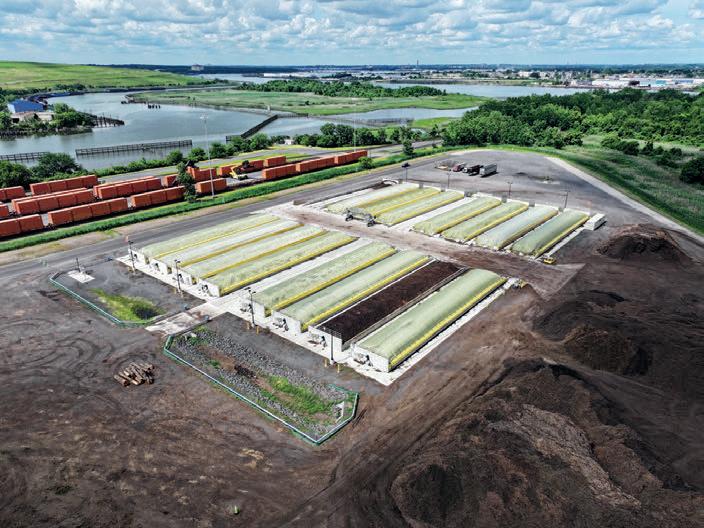




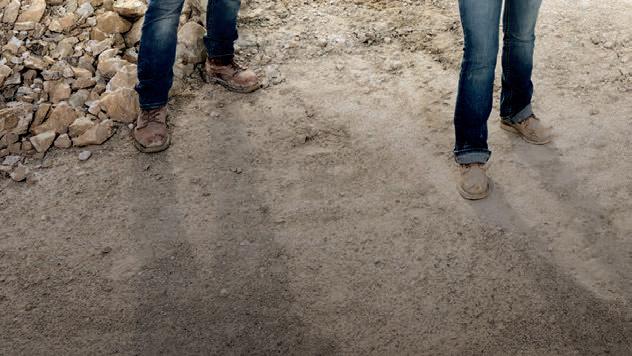



On 17 September, the Waste Contractors and Recyclers Association of NSW (WCRA) will host the 2025 National Safety Summit in Sydney – the only conference dedicated solely to safety within the waste and recycling sector.
Safety must be more than a compliance exercise; it’s the foundation of every successful and sustainable waste and recycling business,” says Brett Lemin, Executive Director of the Waste Contractors and Recyclers Association (WCRA) of New South Wales.
“ e National Safety Summit is about coming together as an industry to share knowledge, challenge ourselves, and drive real improvements that protect our people every single day.”
Brett says at a time when the waste and recycling industry faces growing risks, from lithium-ion battery res to heavy vehicle incidents, manual handling, and the rise of psychosocial injuries, the National Safety Summit provides a critical forum to address these challenges head-on.
e summit brings together frontline workers, supervisors, managers, regulators, and safety professionals to collaborate, learn, and share best practices that help keep people safe and the industry moving.
e National Safety Summit has become a cornerstone event in the waste and recycling calendar. Unlike broader industry conferences that cover a wide array of topics, this summit focuses entirely on safety, shining a spotlight on the risks that matter most and the practical solutions that can make a real di erence on the ground.
e 2025 program is packed with engaging presentations, reallife case studies, and expert panels designed to inspire action and drive continuous improvement.
Topics will cover key safety issues facing the industry, including the management of lithium-ion battery re risks, vehicle and pedestrian interactions, t-for-work practices, fatigue management, mental health, and emerging technologies that can reduce harm.
A particular focus this year will be on sharing lessons learned from recent serious incidents, helping the sector collectively raise its standards and build safer workplaces. Importantly, the summit isn’t just about presentations, it’s about fostering a culture of collaboration and shared responsibility.
“ e day provides a unique opportunity for attendees to engage directly with regulators, safety experts, and their peers. is exchange of ideas, innovations, and experiences strengthens the entire industry’s approach to work health and safety,” he says.
WCRA’s ongoing commitment to safety is at the heart of the summit.
e association continues to lead the way in providing safety resources, accredited training, and advocacy for stronger safety outcomes.
By hosting this dedicated event, WCRA reinforces the message that safety isn’t just an add-on, it’s the foundation of a sustainable and resilient waste and recycling sector.
Brett encourages those working across the waste and recycling supply chain to attend.
“Whether you’re on the frontline, in operations, in management, or part of the broader regulatory or supply network, the National Safety Summit o ers invaluable insights and practical tools to help make your workplace safer,” he says.
Registrations are now open, and places are expected to ll quickly.
For more information, visit www.wcra.com.au
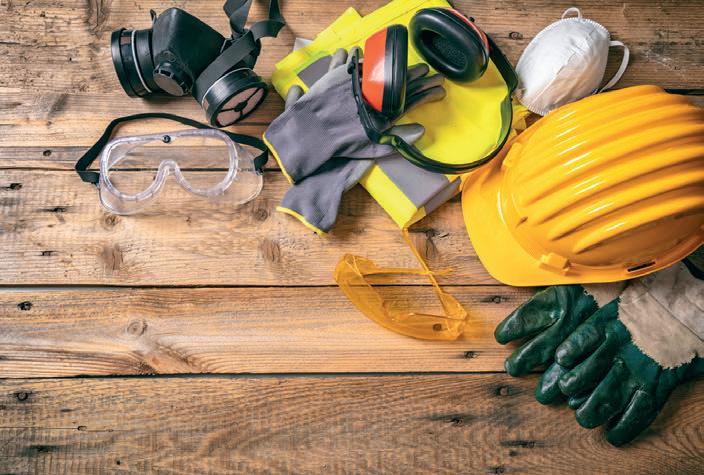
Melbourne-based RPM Automotive Group is leveraging its existing tyre wholesale platform to make an impact on Australia’s circular economy.
Acollaboration between RPM Automotive Group and global recycling equipment provider Fornnax Technology is making major strides in addressing the challenge of endof-life tyre waste.
RPM, which entered the tyre recycling business in April 2024, is already processing more than 180 tonnes of used tyres weekly from a state-of-the art recycling plant and has ambitious plans for expansion.
A key component of the plant is the integration of a Fornnax highcapacity SR-200 HD primary shredder which, according to Jignesh Kundaria, Director and Chief Executive O cer of Fornnax, is already improving the e ciency and quality of the recycled materials produced.
“At Fornnax we understand the urgency of addressing end-of-life tyre waste, not just in Australia but globally,” Jignesh says.
“ e SR-200 HD Primary Shredder is designed for exceptional e ciency, enabling RPM to process vast quantities of discarded tyres while maintaining optimal performance.
“ is collaboration showcases our dedication to providing our clients with the robust, high-performance solutions they need to excel in the circular economy.”
Fornnax Technology, headquartered in Ahmedabad, Gujarat, India, has established itself as a leading global manufacturer of shredding and recycling

equipment. Since its inception in 2013, the company has focused on providing innovative, economical, e cient, and reliable recycling technology.
Its expertise extends beyond tyre recycling to include a wide range of applications such as municipal solid waste, cables, e-waste, aluminium, and other industrial materials. e company is particularly renowned for its heavyduty and high-capacity machines, boasting more than 100 project installations worldwide.
Fornnax’s product strength is in its primary shredders, such as the SR-Series and the advanced SRMAX Series, secondary shredders (R-Series), and granulators (TR-Series) designed to handle challenging waste streams, converting bulky materials into consistently sized output for further processing.
e SR-200 HD primary shredder deployed at RPM’s facility is a prime example of Fornnax’s engineering.
RPM Automotive Group Limited comprises a diverse collection of businesses operating across various segments of the automotive sector and has built strong customer awareness and loyalty for its brands. It’s drawing on an existing distribution network and customer base to drive the new tyre recycling initiative.
e recycling program employs a reverse logistics approach, actively engaging with the open market
to acquire tyres for repurposing.
Jignesh says that by using its existing infrastructure, RPM aims to collect and recycle up to 54,000 tonnes of end-of-life tyres within the next ve years.
“ is initiative marks a crucial step in reducing land ll dependency and fostering a more sustainable future for Australia,” he says.
e company is transforming discarded tyres into recycled rubberbased products that will support key industries. ese materials are slated for use in road infrastructure projects and as low-grade diesel fuel for industrial kilns, mills, and power plants, e ectively closing the loop on tyre waste and creating new resources from what was once considered waste.
“Fornnax takes immense pride in empowering industry leaders like RPM, along with a global clientele spanning



Europe, the GCC (Gulf Cooperation Council), and beyond, with its cutting-edge recycling technologies,” Jignesh says.
“Our SR-200 HD shredder embodies our dedication to high-performance sustainability solutions, enabling businesses to optimise waste processing while promoting eco-friendly practices.”
Based on customer demand for highcapacity pre-shredders, the SR-200 HD primary shredder is a redesign of the standard SR-200 model and has the highest input capacity model in the SR series.
It comes with various proven knives developed by Fornnax and a larger shaft centre that provides more discharge space to process bulky and highthickness materials.
e slow-speed shafts, which produce up to 2,000,00 Nm (newton metre) of


torque, allow the SR-200HD to work with the most challenging materials. is, along with a quick shafts change system, enables the end user to switch from working in one application to another.
Di erent variants are available for di erent market standards – the SR-200 HD with a trommel screen provides output sizes of 60-80 millimetres, without a screen it produces single pass rough shreds at 400 millimetres.
Jignesh says by continuously driving innovation in the recycling sector with advanced heavy-duty equipment, Fornnax remains steadfast in its commitment to supporting its global partners in their pursuit of a more sustainable, circular economy.
For more information, visit: www.fornnax.com
























Rising levels of support for the LiuGong equipment range across Australia’s civil, construction and mining industries are in for a turbo-boost.
In a big metropolitan move for
of exclusive agship dealerships at Wetherill Park in Sydney, Truganina in
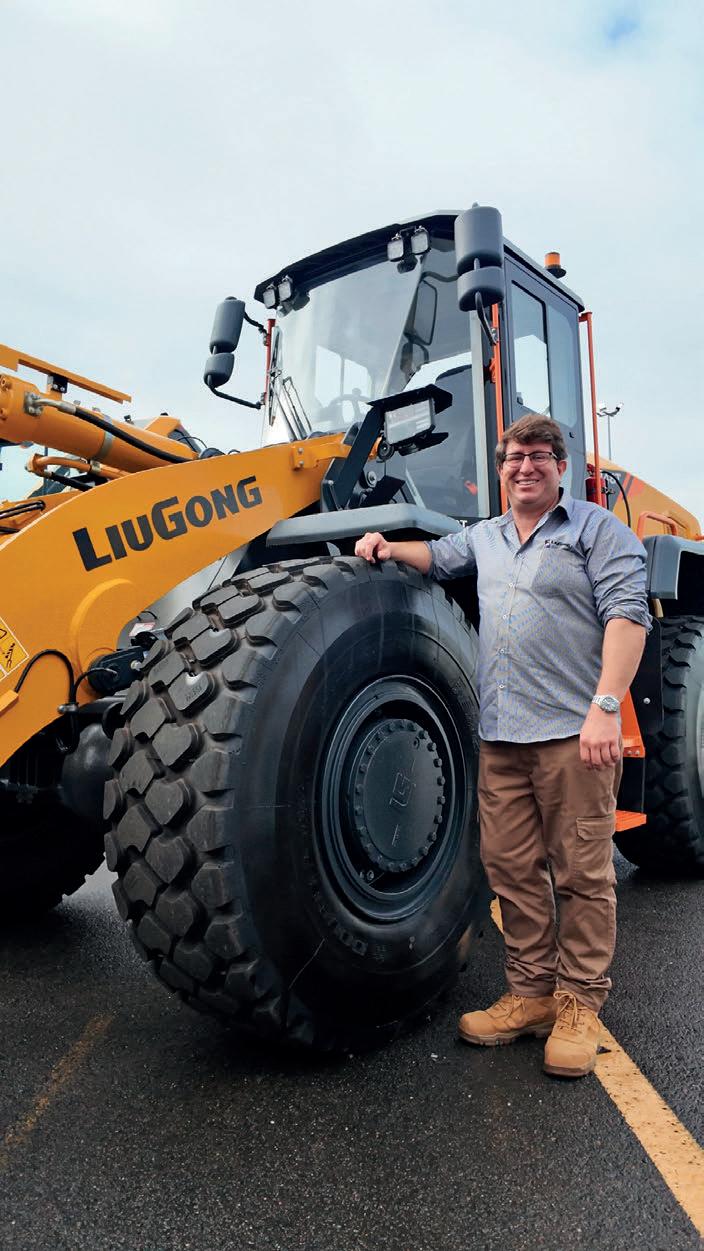
e new Construction Distribution as local parts depots and product support sta .
LiuGong Australia’s Liam McCormick says it has been an amazing growth story for the LiuGong brand in Australia over the past two decades and the new CDA dealerships will open another exciting chapter, especially for its impact in metropolitan areas.
“LiuGong has risen to be a leading equipment provider in market segments, like wheel loaders, and it’s fast approaching the same with numerous other machines,” Liam says.

“ e range has come a long way to now o er similar or greater performance to premium brands, and now with the styling to match. is is increasingly being recognised by businesses and industry operators.”
Liam says the recent arrival of LiuGong’s electric equipment range has also had a big impact and he believes the company is leading the pack with this technology in Australia.
“LiuGong has been developing electric machines for 15 years, it has 11 product lines, has launched over 90 products across most market segments and has amassed well over 11 million hours on battery electric vehicles around the world.
“ e CDA dealerships are in a very strong position to support the increasing demand for LiuGong’s electric range and it will be an exciting phase that will really drive the brand in the metropolitan and wider markets.

“ e dealerships are already coordinating electric machine trials with various major Australian companies.”
He says having the dealerships solely focused on LiuGong and sta ed with expert service technicians and product support teams is a great step for the brand.
“ e LiuGong brand has become big in Australia quite quickly. e network is strong in regional areas across the country and has been for over 20 years, so it is good to add further weight to that and now strengthen it in metropolitan areas.”
CDA has extensive experience in sales and customer support. Service technicians and parts sta receive specialist LiuGong training on the full range of products, systems and technical data to ensure high levels of servicing and support.
In addition to sales sta , technicians are on the road and on-site, so operators can visit the
dealerships at any time for any technical support and parts supplies.
“You can be assured that it is the highest level in LiuGong servicing,” Liam says.
“We have had a lot of positive feedback from LiuGong owners, who are already bene tting from having a local service technician to ask technical questions, or being able to order emergency parts.
“ e dealerships will also assist the optimisation of machines prior to delivery, which will enable faster deliveries and service, and they will help to manage machine allocation across the dealer network more e ectively.”
Liam says with surging product sales and strengthening foundations now across all markets, LiuGong Australia and CDA look forward to a new era for the brand in Australia.
For more information, visit: www.mcintoshandson.com.au

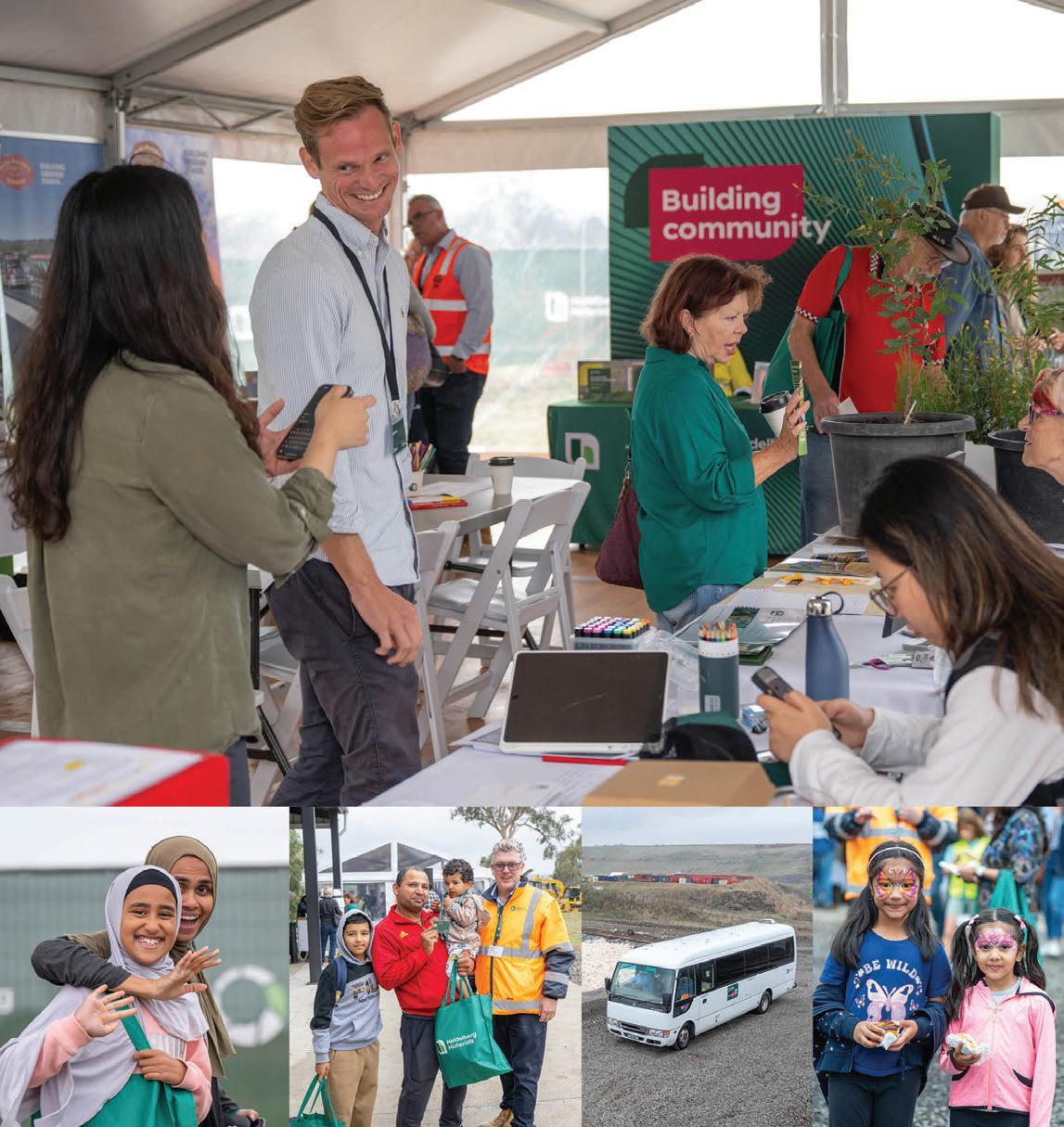


e en showcased ustralia’s unified drive towards a circular economy uture.
The relentless hum of urban life often masks a fundamental challenge: the ever-increasing tide of waste. Amid this challenge, Australia’s waste management and resource recovery sector is forging a new identity, driven by innovation, collaboration, and an unwavering commitment to a circular future.
Nowhere was this transformative energy more palpable than at ReGen 2025, a landmark event that solidi ed its position as the nexus for driving Australia’s resource recovery and circular economy agenda.
Ali Lawes, Event Director and Commercial Product Manager for Diversi ed Communications, says Australia nds itself at a critical
juncture, grappling with the complexities of waste generation, the nite nature of virgin resources, and the global demand for sustainable practices.
It is within this context that ReGen 2025 o ered a vital platform for ideas, solutions, and a collaborative forum where policy met practical application.
“ReGen 2025 proved its role as the industry’s essential annual touchstone, uniting diverse stakeholders under a shared vision of a cleaner, more resource-e cient nation,” Ali says.
“At the time of going to press, it was too early to con rm nal attendance numbers, but the response has been incredibly strong, with signi cant representation from government, local councils, waste
and recycling operators, and circular economy leaders.
“With 120 exhibitors spanning design, recovery, and second life solutions, ReGen 2025 successfully united the full spectrum of the circular resource sector – a rst for Australia. e strong engagement con rms that this bold repositioning has resonated with both legacy stakeholders and emerging players alike. It’s a powerful starting point for a platform that will only grow alongside the sectors it serves.”
Ali says the very pulse of the sector could be felt through the interests of ReGen’s pre-registered council attendees.
eir top product interests painted a picture of the immediate priorities – resource recovery, circular design,

government policy and legislation, reuse, repair, remanufacture, recycled products, and waste management.
“ is list is more than just data; it re ects the front-line challenges faced by local governments, who are not only managing current waste streams but are also acutely aware of the systemic changes required,” she says.
“ReGen delivered a concentrated platform addressing these multifaceted needs, providing direct access to the innovations and expertise essential for progress.”
Complementing these pressing interests was a robust exhibition oor, teeming with the driving forces of the sector.
Industry stalwarts such as Caterpillar Australia, Komatsu, and Scania Trucks underscored the critical role of heavy machinery and robust logistics in e cient waste processing and transportation.
eir advanced equipment is essential for everything from material handling and shredding to composting and recycling, enabling the highvolume operations necessary for a circular economy.
Beyond machinery, the engagement of organisations such as the Australian Organics Recycling Association (AORA) highlighted the growing signi cance of organic waste diversion and its transformation into valuable soil improvers.
Ali says the inclusion of innovative product solutions from entities such as Biobag World demonstrated the shift towards sustainable materials at the consumer and commercial level, showcasing how responsible design is integral to closing the loop.
“ ese exhibitors were not just displaying products; they were presenting pathways to operational e ciency, environmental compliance, and enhanced resource utilisation,” she says.
A curated speaker program tackled the sector’s most pertinent and often challenging topics head-on.
Sessions like FOGO Mandates in Practice, featuring insights from Amanda Kane of NSW Environment Protection Authority (NSW EPA), and Enabling Australia’s Circular Economy with Helen Bradley, Manager at Inner West Council, provided real-world experience from the front lines of food organics and garden organics management.
Ali says the direct sharing of lessons learned is indispensable for councils and commercial operators grappling with the complexities of FOGO implementation and compliance.
Further upstream in policy and strategic direction, Alexandra Geddes of NSW EPA o ered a crucial programs update. Her insights were complemented by discussions with Patricia O’Callaghan, from the Queensland Department of Environment, Tourism, Science and Innovation, who presented on Queensland’s circular shift and enabling Australia’s circular economy. ese sessions provided an overview of government e orts to create enabling environments and drive change at the state level, o ering clarity and foresight for businesses aligning with national resource recovery goals.
e expo also confronted the sector’s looming challenges.
Steven Head from Hornsby Shire Council delivered a sobering yet essential session on Sydney’s looming waste infrastructure crisis and the pathway forward, highlighting the urgent need for strategic investment and collaborative solutions to urban waste management pressures.
On the human element, Esther Landells from Local Government NSW delved into Behaviour Change and Education, a session crucial for understanding how to engage communities and foster the public participation required for successful waste reduction and recycling programs. Finally, the session on Recycled Content in Public Spaces: Balancing Risk and Reward, directly addressed the market demand side, exploring the complexities and opportunities of integrating recycled materials into procurement decisions and public works. Beyond individual sessions, the highinterest topic areas further illuminated the sector’s current preoccupations and future trajectories.
FOGO management, in all its facets – education, alternative processing technologies, and market development – remained a dominant theme, re ecting the nationwide push for organics diversion.

e overarching concept of the circular economy captivated attendees, speci cally discussions on how to create and encourage circularity in practice, with a strong emphasis on procurement decisions that favour recycled content and sustainable design.
e complexities of plastics recycling, including advanced processing options and market development for recycled plastics, garnered attention, highlighting the industry’s drive to nd viable solutions for this challenging material stream. Furthermore, the burgeoning issue of battery recycling,

driven by the rapid proliferation of electronic devices and electric vehicles, emerged as a critical new frontier, underscoring the need for safe, e cient, and scalable recovery solutions for these hazardous materials.
Ali says the essence of ReGen 2025’s success was not just in the breadth of its program or the calibre of its exhibitors, but in its ability to foster genuine connection and collaborative action.
“It provided a rare physical space where policymakers could engage directly with technology providers, where councils could share challenges with solution innovators, and where academic insights could meet commercial realities,” she says.
“ is blend of intellectual discourse, practical demonstration, and networking opportunities is what truly propels the industry forward,
transforming theoretical frameworks into tangible outcomes.
“ e energy on the exhibition oor and in the conference rooms was electric, a testament to an industry united by a shared purpose and brimming with new possibilities.”
e path to a truly circular Australia is complex, fraught with regulatory hurdles, infrastructure demands, and the challenges of changing entrenched habits. Yet, Ali says the momentum generated at ReGen 2025 o ers optimism.
“ e collective commitment
demonstrated by all participants – from government bodies to heavy machinery providers, from organics recyclers to innovators in recycled products – signals a powerful, uni ed front,” she says.
“ e conversations initiated, the partnerships forged, and the knowledge

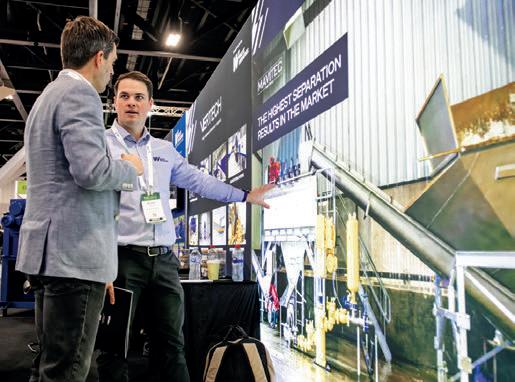
exchanged are the essential building blocks upon which Australia’s more sustainable future will be constructed.
“ReGen 2025 truly a rmed its role as the national catalyst for change, showcasing the industry’s shared vision and relentless drive towards a circular economy for Australia.”


The Waste Innovation and Recycling Awards help raise awareness, inspire change, and drive progress within the industry. Don’t miss your chance to be involved.

The bene ts of nominating for an industry award extend far beyond the immediate recognition – it’s an invaluable opportunity to enhance brand visibility and credibility.
e process is often a deep dive into achievements, successes, and unique selling propositions. A process that Erin Ford, Senior Brand and Marketing
Manager for Repurpose It, says can be profoundly positive.
Resource recovery specialists Repurpose It has scooped the pool at recent Waste Innovation and Recycling Awards nights, taking home the coveted Leader of the Year, Operational Excellence, Women in Waste and Young Professional of the Year awards.
In 2024 omas Anton, Repurpose It Head of Customer Experience, was named Young Professional of the Year. Following the win, he said it had given him an opportunity to re ect on
“When I think about all the great experiences and opportunities that I have had, I am de nitely proud of what I have accomplished.”
It also solidi ed his inclination to hire young people looking to start their career and giving them opportunities.
Erin says seeing her peers succeed in their careers and be acknowledged for their successes among like-minded individuals is inspiring.
“We are proud to be part of an industry driving innovation in waste reduction and resource recovery,”
“ at’s why we think it’s so important to take the time to recognise the individuals and organisations who are driving real change.
“Nominating for the Waste Innovation and Recycling Awards has been incredibly valuable for Repurpose It.”
Although everyone in attendance would like to win, Erin says there’s more to the awards night.
“It’s not just about winning, it’s about re ecting on the work we’re doing, celebrating our teams and people, and shining a light on the innovation happening behind the scenes,” she says.

“Being nominated and recognised has helped us grow our pro le, connect with other leaders across the circular economy, and reinforce our reputation as a company committed to driving Australia towards a circular economy.”
Erin says winning the awards also had a big impact internally.
“For individuals and teams, it’s incredibly rewarding to see their work acknowledged at a national level,” she says.
“We’d absolutely encourage others in the industry to put forward nominations. Recognition is powerful, not just for the winners, but for the entire sector.”
After a successful 2024 event, the 2025 Waste Innovation and Recycling Awards are expected to showcase an exceptional lineup of achievements from across the waste, recycling and resource recovery sectors.
Industry leaders REMONDIS, Visy, and Re-Group have signed on as sponsors for the 2025 awards.
Categories open for nominations include Outstanding WARR
of Waste (proudly sponsored by ReGroup), Community Engagement
Workplace of the Year, and Leader
Erin encourages individuals and
Going through the nomination process can help to reveal previously unnoticed strengths, highlight areas for improvement, and provide valuable insights into industry best practices.
It’s also a chance to critically evaluate
e awards, held in conjunction with Waste Australia Expo, will take place in Melbourne on October 29, 2025, at
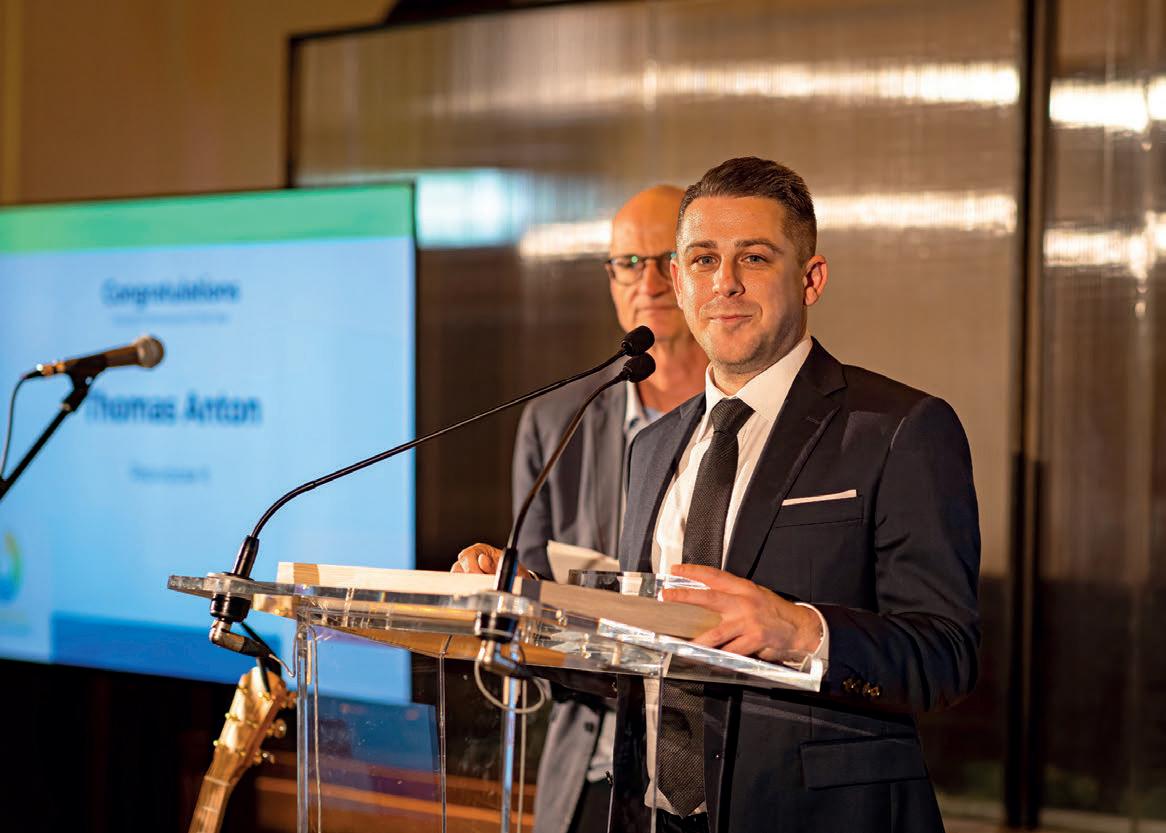
From safe collection and material recovery to design and regulation, creating a circular economy for batteries is complex. An upcoming panel at Waste Expo Australia will dissect the challenges.

A panel session at Waste Expo will explore the complex challenges of establishing a circular economy for batteries. Image: JLStock/shutterstock.com
The surge in demand for lithium batteries has ignited a complex discussion within Australia’s waste management industry: how do we responsibly manage their end-oflife impact and integrate them into a circular economy?
ere is no simple answer. As Alison Price, Chief Executive O cer of the Waste Recycling Industry Association Queensland (WRIQ), aptly puts it: “If there was a straightforward, linear solution, we would have solved it already.”
is sentiment underscores the challenges facing the industry, which will be a key focus of a panel discussion at this year’s Waste Expo, featuring Alison, Merrill Gray of Wolf Advisory, and Brett Lemin, Executive Director of the Waste Contractors and Recyclers Association (WCRA) of New South Wales.
Returning to the Melbourne Convention and Exhibition Centre on 29 and 30 October, the expo will feature a record-breaking 140 exhibitors and attract more than 3500 industry professionals.
Sessions will, among other things, spotlight the circular economy and dive into sustainable practices, from advanced material reuse to lithium batteries.
e widespread use of lithium-ion batteries in electric vehicles, renewable energy storage, and portable electronics has positioned them as indispensable components of modern life.
However, their use casts a long shadow, demanding a shift from a linear “take-make-dispose” model to a circular approach. For lithium batteries, this means establishing robust systems for safe collection, maximising material recovery, designing for easier disassembly, and ensuring comprehensive
regulatory compliance. Each step presents its own set of hurdles. It’s these complex challenges the panel will explore.
One of the most immediate challenges is the safe collection of spent lithium batteries. eir energy-dense nature makes them a re hazard if damaged, improperly handled, or discarded in general waste streams.
Brett says the sheer variety of products containing batteries – from children’s toys to shoes, and from computers to phones – makes public education about proper disposal a monumental task.
Batteries often end up in household bins, posing an uninsurable risk to waste and recycling facilities, with devastating nancial and human costs, including severe injuries and even fatalities from battery res in apartment buildings.
“It’s inevitable, with the current rate of res, that we’re either going to have signi cant life-threatening injuries or lifechanging injuries or a fatality,” he says.
It’s a stark reality that he says emphasises the urgency of addressing safe collection not just through public awareness, but through widely accessible and safe infrastructure.
Beyond collection, material recovery remains a complex challenge. Lithium batteries are intricate assemblies, and e ciently extracting valuable materials such as lithium, cobalt, nickel, and graphite in high-purity forms is a demanding process.
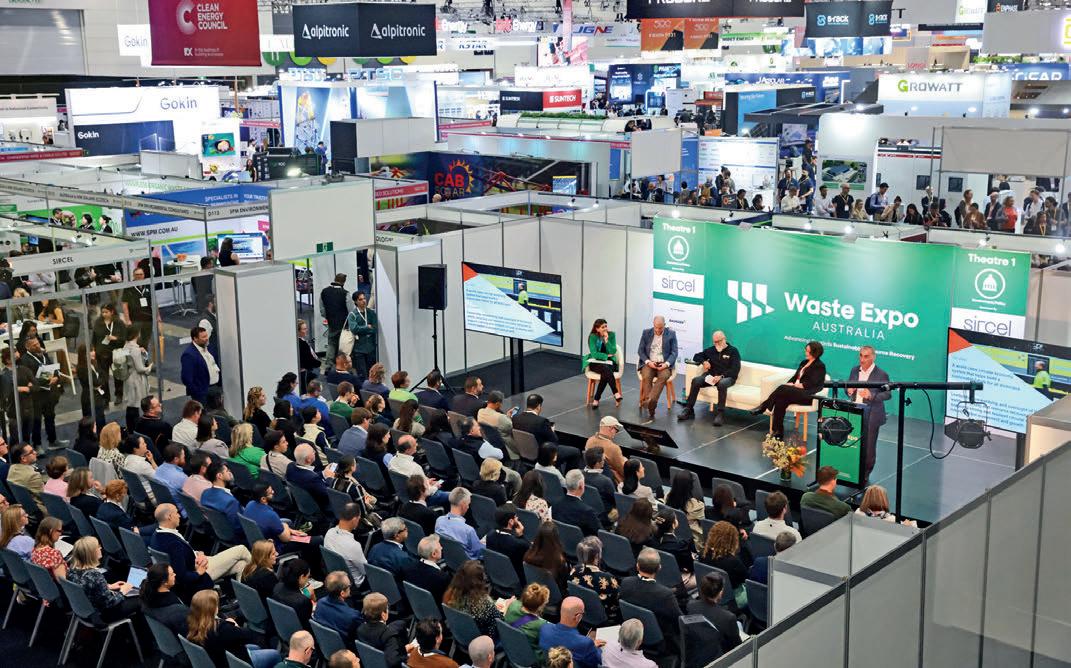
Australia currently has limited processing capacity, with only a handful of companies operating in this space.
“It’s not yet cost-e ective to recycle them,” Alison says, “until there is that commercial market for battery recycling, it’s going to be really hard to even nd the resources to collect the materials separately.”
Merrill Gray agrees that the small Australian market presents challenges to serious players in the business.
While black mass (a concentrate of valuable battery materials) can be processed, most is currently sent o shore. Merrill says support for downstream commercial processing options – even starting at a small scale for speci c end use battery types such as e-mobility – and backing sound/derisked technology, is crucial to completing the circular loop.
She says a critical missing link in the circular economy for lithium batteries is design for disassembly.
“Many batteries are engineered for performance and cost, not for ease of end-of-life processing. is makes manual or automated dismantling labourintensive and often hazardous.”
Promoting modular designs, simplifying material compositions, and clear labelling would streamline the recycling process, making it more
economically viable. But this requires a shift in manufacturing practices, driven by collaboration between product designers, battery producers, and recyclers to embed circularity from the outset.
Finally, regulatory compliance is the linchpin that can unlock widespread change.
Brett says harmonised regulations are essential to set clear targets for collection and recycling, enforce safe handling practices, and incentivise sustainable design, however there are regulatory barriers to operating within Australia.
“From the moment you have an idea that you want to start a battery recycling process to physically being able to open the doors is at least six years in some states,” he says.
“ at also requires a signi cant chunk of money to throw down without any certainty that you are going to have an income, or even be able to operate, in six years. ere’s not a lot of appetite.”
He says New South Wales’ Product Lifecycle Responsibility Bill 2025 is a promising step, and should help create certainty, but its full impact is yet to be seen.
He stresses the importance of other states following suit to create a consistent national framework.
“If all the states align and have the same requirements, that’s going to create regulatory certainty. at’s going to create demand. And all of those will mean that we’ll have con dence in the market to be able to build the facilities that we need, but also the nancial stability to pay for those facilities.”
e panel discussion at Waste Expo aims to draw attention to the issues but also tease out some of the subtleties, Alison says.
“By bringing together diverse perspectives from industry associations, advisory bodies, and practitioners, these sessions facilitate a deeper understanding of the complex interplay between technology, economics, safety, and policy,” she says.
“ ey provide a vital forum for sharing insights, identifying innovative solutions, and fostering the collaborative spirit necessary to tackle challenges that no single entity can solve alone.
“ e open dialogue helps accelerate the adoption of new technologies, inform policy development, and ultimately, drive the industry towards more sustainable practices.”
To register, visit: www.wasteexpoaustralia.com.au
The waste and resource recovery sector emerged triumphant at the 2025 Women in Industry Awards. Three successful businesswomen discuss their journeys, challenges and achievements.
In an industry that remains one of the most challenging to break into, Tammy O’Connor has led the way as a proud Indigenous woman – carving a path de ned not only by success but by purpose.
Awards held in Melbourne on 19 June 2025, Tammy was honoured with both Woman of the Year (proudly sponsored by Fulton Hogan), and Business Development Success of the Year awards.
achievements as Founder and Managing Director of KingKira Group, an Aboriginal-owned waste management business servicing the mining sector in Western Australia.
an empire in honour of her two daughters – Shakira and Kingston, as well as the Aboriginal community she loves so deeply.
Tammy says these accolades should not be remembered as personal wins – they are the result of resilience, sacri ce, and a commitment to uplifting others, particularly Aboriginal women.
THE START OF IT ALL
“It was hard breaking into the mining and waste industries. ey were spaces I didn’t know much about,” Tammy says.
Aboriginal businesses in the market at that time.”
Before her break into the waste industry, Tammy worked as a teachers
communities including Kimberly. In 2014, KingKira was created through the Fortescue Metals Group’s Billion Opportunities program. Established

industry and there were very few female
“Being able to inspire young girls and the next generation is so important. Empowering women in all jobs is crucial to ensure our industries thrive.”
Tammy O’Connor Founder and Managing Director of KingKira Group
participation of First Nations businesses in their supply chain.
At the time, Tammy was working from home, juggling a pay cut, a demanding new roster, two young daughters, and external responsibilities on Native Title boards. She also carried the wounds of previous failed joint ventures.
“People love to talk about success, but I think it is also important to talk about failures,” she says.
“Other companies didn’t take me seriously. I quickly discovered being Aboriginal and also being female while breaking into a new industry was extremely hard.
“You have to try di erent things and put yourself out there in order to succeed.”
Tammy named her business for her two daughters Shakira (23) and Kingston (18) and has made it clear everything she does is for her family.
“Shakira was the one to nominate me for the (Women in Industry) award, and she is quite involved with the company at the moment,” she says.
“My youngest is graduating high school this year so we aren’t sure which path she is headed on.
“I don’t force my girls to do certain things, but I do my best to support both of them in trying di erent things. It is something that stuck true for me during my life, and I think I am where I am today because of that.”
From a ve-person operation just three years ago, KingKira now supports a large team and facilitates subcontracting opportunities for other Aboriginal businesses.
“I got into business not for myself, not even for my community, but for women,” Tammy explains. “I wanted to show that we don’t have to stay in one box. We can challenge ourselves.
“I have control over my money, over the contracts I award, and I’m choosing to give those opportunities to other Aboriginal businesses. at’s real empowerment.”
She says the double win at the Women in Industry Awards was a surprise – an unexpected, but happy triumph.
“It was great to be recognised, but I want to acknowledge that the win is not only for me. e recognition also needs
to be shared amongst our team,” she says.
“All of our success is something that we have achieved together.”
She also shares her success with her past female mentors, namely Elizabeth Gaines, her longest standing mentor and the driving force behind Tammy’s Roberta Sykes Indigenous Education Scholarship.
e scholarship is o ered with the Harvard Club of Australia (HCA) to provide talented Indigenous Australians the opportunity to undertake up to two years of postgraduate study at Harvard University.
For Tammy, the awards are more than personal recognition – they’re vital for visibility.
“Witnessing other women in senior roles is empowering,” she says. “And so is being surrounded by so many strong, driven women, hearing their stories and recognising shared struggles.
“ e awards shine a light on how to be role models for other women to look up to, all while providing somewhere to network.”
With KingKira’s rapid growth comes a shift in pressure. Tammy is no longer heavily involved in the daily operations but is now focused on strategic direction and legacy.
“It’s still stressful, but it’s a di erent kind of stress. We’re now managing
And the winners are:
Excellence in Mining: Beck May Felstead – Strong Minds, Strong Mines
Excellence in Construction: Isolde Piet – Suburban Connect
Rising Star, sponsored by Atlas Copco Australia: Jennifer Clements - Consultex
Excellence in Transport, sponsored by Kenter Logistics: Kirryn Crossman - SMEC
Safety Advocacy, sponsored by PACCAR Australia: Mandeep Singh, Ego Pharmaceuticals
Excellence in Engineering: Stacey Daniel – Board Presence
Excellence in Energy: Suzanne Shipp – APA Group
expectations, commitments, and reputation because people know us,” she says.
“We are now having to say no to certain things because we just don’t have availability. ese are new stresses that come with growth in the business.”
To young women entering the waste or mining sectors, Tammy o ers simple
but sage advice: “Be passionate about what you do and always try to align yourself with your work.”
“Just because you are quali ed in something doesn’t mean that is what you must stick to. I chose to make the shift because I wanted to help other people, and I knew this would be the best way.”
Tammy hopes her legacy will inspire her daughters and help them
“It’s not the first industry many women consider, but awards like this help open that door.”
Eileen Breen Co-Founder of NTEX
become strong business women.
“Being able to inspire young girls and the next generation is so important and empowering women in all jobs is crucial to ensure our industries thrive.”
Eileen Breen, President of the Waste and Recycling Industry Association NT and Co-Founder of demolition and recycling contractor NTEX, was awarded the Industry Advocacy Award for her work in advancing the waste and recycling sector in the Northern Territory.
Eileen says the Territory faces distinct challenges in waste management – from remote logistics to limited infrastructure. She has made it her mission to make a change in the sector.

“We’ve worked incredibly hard to see waste recognised as an essential service
“ is award brings much-needed exposure to the industry and helps communicate the value we bring, not just environmentally, but
A cornerstone of Eileen’s impact has been her push for circular economy solutions, especially in the construction and demolition (C&D) sector.
Under her leadership, NTEX launched the Northern Territory’s rst C&D waste recycling facility, providing critical infrastructure that diverts waste from land ll and recovers valuable
“It pivoted our business from one of the most destructive industries on the planet, which is demolition, to diverting it into resource recovery and recycling
“We’ve been able to proudly get those products back into the civil industry and work with other recyclers across the Northern Territory for products that may come out of a demolition project.”
As a female leader in a traditionally male-dominated eld, Eileen is
aware of the importance of visibility and representation.
“It’s not the rst industry many women consider,” she says. “Awards like this help open that door.”
Naomi Elliott didn’t set out to become a leader in Australia’s manufacturing sector, but today, she stands as an example of how purpose and passion can de ne a person.
Recognised for her dedication to workplace innovation, leadership, and support for the advancement of women in manufacturing, Naomi received the Excellence in Manufacturing award.
In the past four to ve years, Naomi has immersed herself in the manufacturing industry, not only growing in her family’s business Concept Labs, but advocating for women’s leadership within the sector.
Naomi is also the Co-Founder of Suncoast Biochem, a sustainabilityfocused biotechnology company pioneering circular manufacturing. e company transforms agricultural waste and surplus produce from local farms and processors into market-ready botanical ingredients for use in skincare, haircare, and cleaning formulations.
As the General Manager of Concept Labs, an industry leader in manufacturing cosmetics, sun care and cleaning products, Naomi has grown the team from three to 25 – 70 per cent of whom are women.
“It’s a family business and I kind of fell into it,” she recalls. “I started looking after the business for a few months while my parents travelled and I studied. Since then, I have evolved in the role and the business.
“My focus is fostering growth within my company and sharing that with the wider manufacturing community.”
Naomi is also proud to have codeveloped the State Governmentfunded Women In Manufacturing Leadership Program, which has reached more than 100 women in the industry.
e program targets workshops, master classes and mentoring programs over six months.
“I am loving that I am able to
empower and help train and coach women in manufacturing,” she says.
In addition to her commitment to manufacturing, Naomi sits on the board of the Sunshine Coast Business Women’s Network and is a Director of Generation Innovation, a program that works with 15- to 21-yearolds in helping them develop their business ideas.
“I am loving that I am able to empower and help train and coach women in manufacturing.”
Naomi Elliott Director, Concept Labs
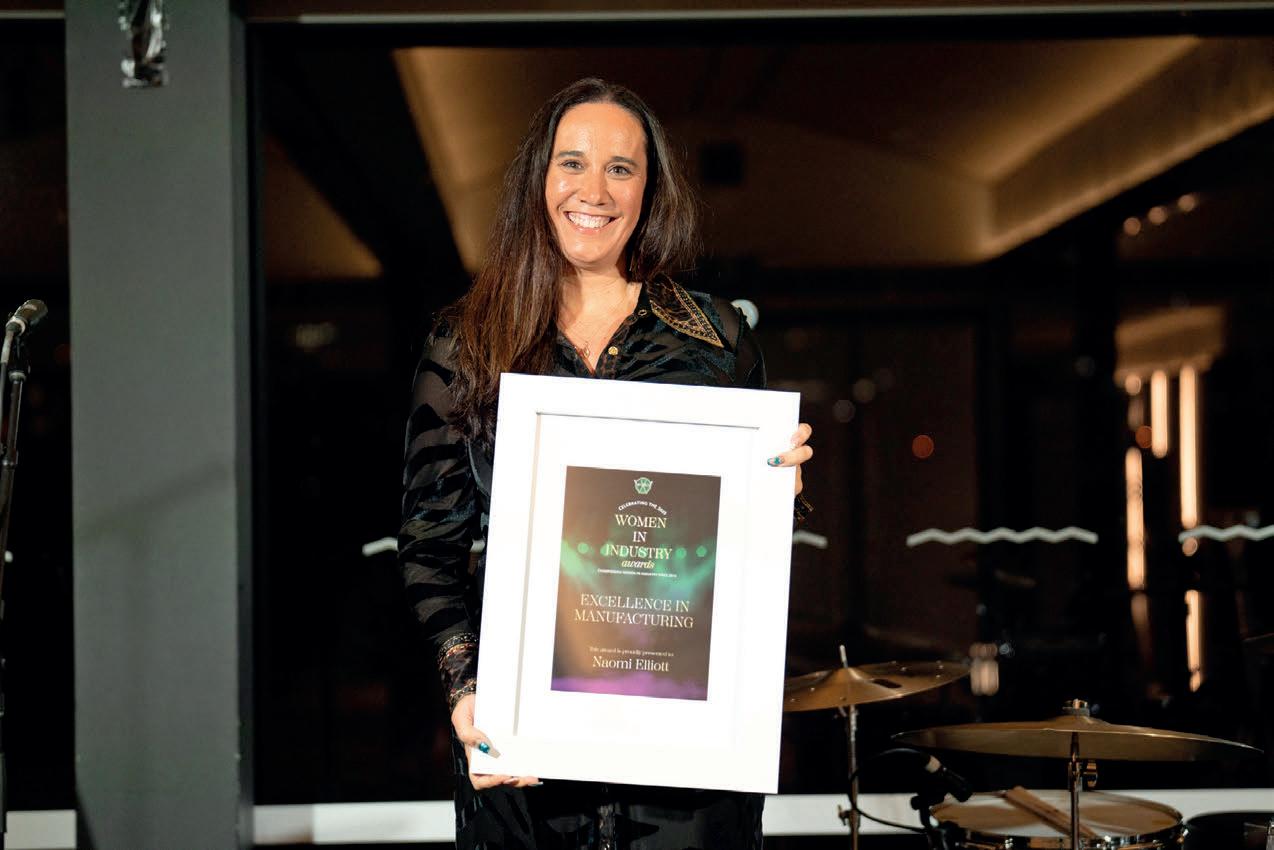
The largest construction trade show in North America is expanding its award program for the 2026 show.
The Next Level Awards celebrate companies pushing the boundaries and delivering innovative products, services, and technologies that move the construction industry forward.
And now they’re levelling up, with the introduction of two new categories: Equipment and Technology.
Nominations open August 19, 2025, and close December 1, 2025.
A panel comprising industry experts and leaders will select 10 nalists in each category ahead of CONEXPOCON/AGG.
During the show, held March 3-7, 2026, in Las Vegas, attendees will vote for their favourite in each category, with winners announced on the “Ground Breakers” keynote stage on 6 March.
e awards program premiered during CONEXPO-CON/AGG 2023, when Holcim’s ECOPact Low-Carbon Concrete was selected as the Next Level Award’s Contractors’ Choice Award Winner.
Dana Wuestho , CONEXPO-CON/ AGG Show Director, says the expansion of the Next Level Awards exempli es the commitment of CONEXPO-CON/ AGG to advance the construction industry by elevating and celebrating its groundbreaking innovations that have an enormous impact on how the world is built.
“By highlighting the most inventive products, services, and technologies, we not only honour the pioneers driving progress but also inspire the entire industry to reach new heights,” Dana says.
She says the Next Level Awards provide an excellent opportunity for companies to gain extra exposure and recognition for their
innovative contributions to the industry.
Finalists will be recognised in CONEXPO-CON/AGG press releases, social media, and other applicable channels, encouraging attendees to visit their booths and learn more about their cutting-edge products.
Held every three years, CONEXPOCON/AGG is the must-attend event for construction industry professionals. e show features the latest equipment, products, services and technologies for the construction industry, as well as industryleading education.
e expo is owned in partnership with National Ready Mixed Concrete Association (NRMCA), the National Stone Sand and Gravel Association (NSSGA) and the Association of Equipment Manufacturers (AEM).
AEM is North America’s premier trade organisation representing o -road equipment manufacturers and their value chain partners and manages the expo.
In addition to the Next Level Awards, CONEXPO-CON/AGG is
introducing the CONEXPO/CON-AGG 2026 Exhibit Design Awards, honouring CONEXPO-CON/AGG exhibitors and their outstanding booth design e orts.
All exhibits at the show will be automatically entered into the competition and placed in one of four sizebased categories.
EXHIBITOR magazine sta will complete the rst round of impartial judging, selecting up to ten nalists in each category. ese nalists will then be judged by a group of designers and marketers on-site. Judges will also select an “Editor’s Choice” award winner.
e winners will be announced on the Ground Breakers Stage and will receive a trophy and a scholarship to attend EXHIBITORLIVE 2026.
is recognition not only highlights the creativity and e ort put into booth designs but also inspires the broader industry with innovative and impactful presentations.
For more information, visit www.conexpoconagg.com




The Terex Ecotec TDS815 Compact Slow Speed Shredder is a cutting-edge solution in waste processing, featuring a compact 1.5-metre twinshaft shredding unit for precise and efficient material reduction.
With quick-change shafts for enhanced adaptability and maintenance efficiency, it stands out as a versatile choice for diverse operations.
Operators can choose to run the shredder with synced or independent shafts, perfectly aligning with specific application requirements for optimal output.
Powered by a CAT 4.4 140-kilowatt Stage V engine, weighing 16,500 kilograms, and equipped with the T-Link telemetry system for smart monitoring, this shredder is exceptionally wellsuited for a wide range of applications including skip waste, bulky waste, household waste, construction and demolition debris, wood waste, green waste, building waste, concrete, and asphalt.
Its robust design, intelligent load-sensing hydraulics, and user-friendly controls make it a game-changer in waste processing, offering

unparalleled adaptability, productivity, and reliability across various waste materials, maximising operational uptime.

The TANA Hammerhead ET combines the manoeuvrability of a tracked platform with the distinct advantages of powerful, all-electric shredding, offering an innovative solution for demanding waste processing tasks and achieving superior material breakdown.
Designed for high-volume operations, this robust machine is a smart choice for mobile, clean, and efficient waste transformation.
An auxiliary diesel engine powers its track movement, while the core shredding function is entirely electric – keeping operating costs down and reducing emissions.
The TANA Hammerhead ET can be quickly deployed, moving easily between jobs or zones on site, with intuitive electric quick couplings enabling rapid power connection.
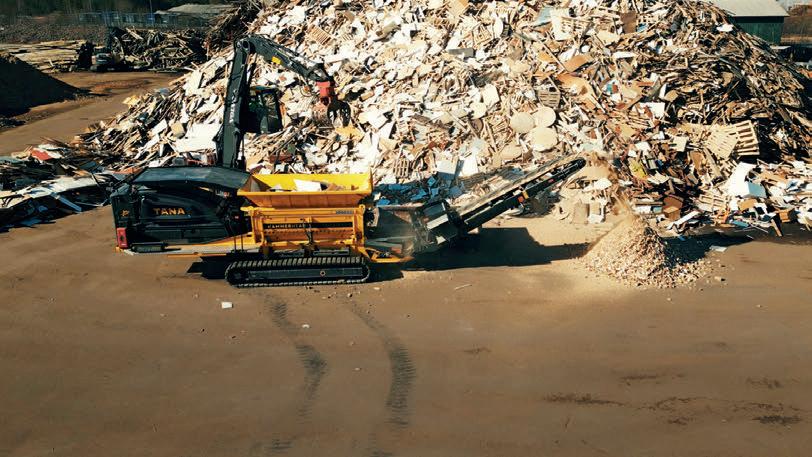
Versatile and agile, the TANA Hammerhead ET handles a broad mix of high-volume waste streams, consistently maximising throughput and optimising material reduction.
Notably, it can be operated effectively in noise-sensitive urban or residential areas thanks to its significantly reduced decibel
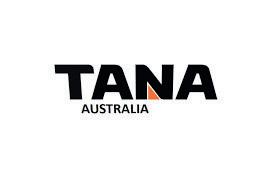
Fornnax’s TDF (Tyre-Derived Fuel) Plant offers a sustainable solution for managing end-of-life tyres by converting them into a high-energy alternative fuel.
Designed to meet the demands of industries such as cement kilns, paper, and power generation, the plant helps replace fossil fuels with cleaner-burning TDF.
The process begins with the Fornnax SR-Series Dual Shaft Primary Shredder, producing tyre shreds in the 50 – 80-millimetre range – ideal for combustion in cement kilns, boilers, and furnaces. A trommel screen ensures uniform output, making the fuel compatible with automated feed systems.
For enhanced value and cleaner combustion, the Fornnax R-Series Secondary Shredder further reduces chips to 20-30-millimetre steel free rubber mulch, with an over band magnet removing steel content to create highquality, steel-free TDF.
Following Australia’s National Greenhouse and Energy Reporting (NGER) Scheme update, which includes specific emission and energy content factors for tyre fuels, Fornnax TDF Plant plays a crucial role in supporting industries to achieve accurate carbon reporting and compliance.
With its advanced shredding capabilities, the
The 4310B Track Mounted Drum Chipper is one of five advanced models in the latest of a long line of robust chipping and grinding machines produced by Peterson.
This powerful unit is suited for high-volume biomass production, efficiently handling a wide variety of feed material, from dense brush and small feedstock to substantial logs up to 60 centimetres in diameter, ensuring versatile processing.
Powered by a Caterpillar C18 Tier II 579 kW engine, the highly mobile 4310B was designed for demanding operations requiring high production output and frequent, effortless moves between diverse job sites.
It provides consistent chip length ranging from three to 32 millimetres and boasts an impressive production rate of 60 to 110 tonnes per hour, optimising operational efficiency.
Key features include a generously sized drum for enhanced capacity, a sloped deck for ease of material feeding, optional sizing grates for precise product specification, an optional feed accelerator for increased throughput, and a choice of top loading or end loading spout, depending on specific application needs.
Peterson, with over 40 years’ experience, specialises in developing cutting-edge processing equipment that reliably turns low-grade organic materials into high-value

Fornnax TDF Plant produces high-quality TDF, enabling businesses to reduce emissions and meet regulatory requirements with confidence.

Contact - Anikt Kalola P +91-9033077711
E info@fornnax.com W www.fornnax.com

products, consistently delivering heavy-duty machines that meet market demand for industry-leading performance, unwavering reliability, and superior quality.

Garwood International’s innovative LitterPact series of side loading compactors is specifically designed to solve accessibility challenges in diverse environments.
The LitterPact’s light and robust body means it can effortlessly access all roads a conventional 4WD can navigate, making it suitable for demanding applications in parks and gardens, remote or regional communities with challenging small collection runs, and even urban narrow streets.
The body features a simple packing mechanism, efficiently operated by either manual or electric controls which precisely actuate the powerful hydraulic system.
This system provides reliable power for smooth bin lifter operation, effective waste packing, controlled raising of the rear door, efficient ejection of the load, and an optional high-pressure water blaster for enhanced cleanliness.
It can be custom-fitted to any 4x2 and 6x4 cab chassis, with versatile sizes ranging from a compact

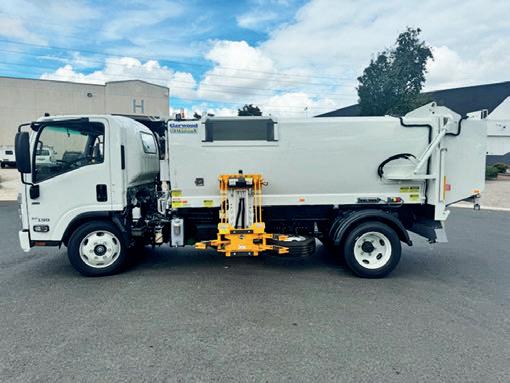
four cubic metres through to a substantial 18 cubic metres, offering unparalleled operational flexibility and waste collection efficiency.




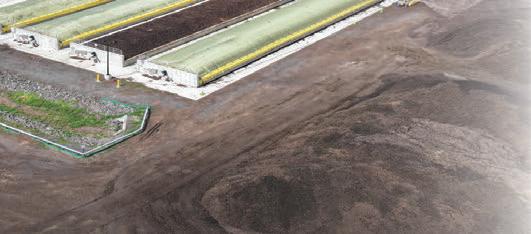
Australia’s waste managers are pushing toward a circular economy and moving beyond outdated solutions. e ngel, irector o oomerang lliance and
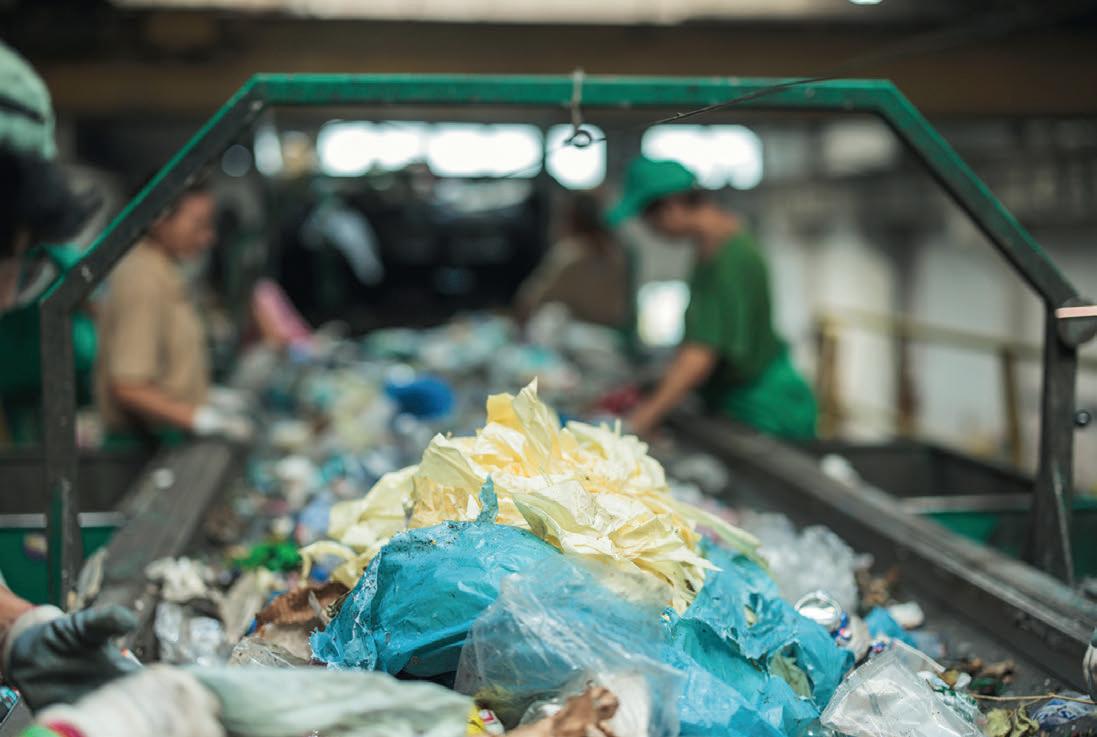
Imeeting table with key waste managers when we all agreed that land lls weren’t the solution.
At the time the giant Woodlawn tip was being proposed and subject to great controversy. It was clear we had to do better at redirecting our burgeoning waste into recycling and even reduce wasteful packaging and single uses.
A number of new government policies, strategies and minimisation ideas emerged in the following years. Waste levies played an important role in decreasing land ll of the heavier construction and demolition wastes. Food organics, garden organics (FOGO)
the ground has been slow, and the voices for the circular economy are becoming louder.
Progress is also not linear, and in one episode (decades ago), the dairy industry announced the removal of reusable glass milk bottles and their replacement with plastic, inevitably destined for the tip –on the day new producer responsibility laws were being introduced into the New South Wales Parliament.
e bruising campaign for container refund schemes (CRS) occurred over a 13-year e ort where the community defeated the big drinks companies. Now, every state and territory has a CRS and it
Many collected containers are made into new bottles, and the recyclers want more so they can sustain production and grow.
Skip to March 2025 and, in collaboration, the Boomerang Alliance, Australian Council of Recycling (ACOR), Waste Management and Resource Recovery Association of Australia (WMRRA), Soft Plastics Stewardship Australia (SPSA) and Australian Packaging Covenant Organisation (APCO) jointly announced their support for mandatory product stewardship for packaging over its full life cycle.
“In addition to batteries, the biggest test this year will be on packaging, in particular so t plastics.”
Jeff Angel Director of Boomerang Alliance
e collapse of REDcycle’s soft plastics collection triggered a real challenge to the social licence of the packaging sector. Now we are waiting for the new Federal Minister for Environment, Murray Watt to act with the urgency necessary in the knowledge that a signi cant majority of the community, industry and respondents to last year’s consultation options want enforceable regulation to put packaging on a circular economy path.
He has continued Australia’s advocacy of a ‘’high ambition’’ global plastics treaty and this must also mean high ambition at home.
Almost every week, there are new research reports about the contamination of the environment and humans with microplastic. Reduction and elimination of this multigenerational poison must be embedded in our economy and society.
Another example of product development overlooking end-oflife considerations is seen in the proliferation of millions of batteries introduced into products without a care for end-of-life disposal.
e problem of resource wastage and chemical pollution has been known for many decades, but only now, with the alarming re risk from lithium batteries, are some governments moving fast. New South Wales is expected to introduce a recovery and recycling scheme this year. Other states must follow.
In addition to batteries, the biggest
test this year will be on packaging, in particular soft plastics.
e Australian Competition and Consumer Commission (ACCC) is currently considering the industry Soft Plastics Stewardship Australia proposal, which anticipates and welcomes new government regulation.
On a broader front, we have the ongoing push for waste-to-energy. e declining space in land lls has energised the WtE sector.
Boomerang Alliance believes this is a dangerous move for the circular economy – waste to energy is a linear, not circular process.
Long-term contracts lock up valuable
resources into ongoing resource loss and it’s not a climate-friendly approach, compared to recycling and reduction in wasteful product materials and practices. Which brings us to the missing elements.
We need compulsory targets for reusables and redesign that reduce resource extraction in the rst place.
So far, these essential actions are mere sidebars in strategies. e bans on single-use items have been great (Australia’s growing list is probably high in world standings) and we need to advance further, making reusables mainstream and redesigning waste and damaging materials out.
e aim of the Boomerang Alliance and its 56 allies is to fundamentally transform the structures and practices of waste in Australia, with new circular systems in operation covering the material life cycle.
ere’s much to do for the rest of the decade, but the energy for genuine change exists in the majority of stakeholders.



We couldn’t have grown without your support.



Manufacturing life-giving soil is a team effort. We’d like to thank the households, communities, councils, collectors, regulators and partners that have helped us get this far.
As we continue to grow, we call upon everyone in the supply chain to do their part.


Together, we can build a more sustainable future.

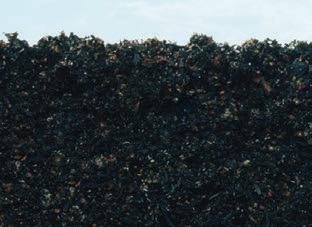


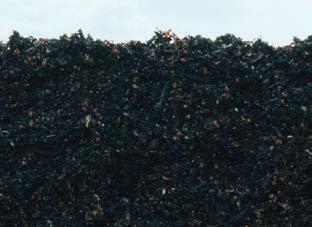





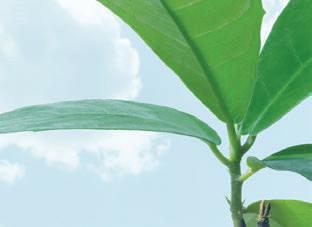



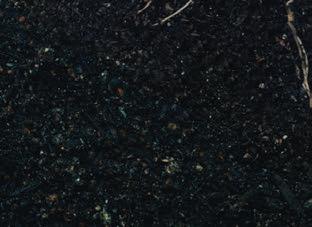




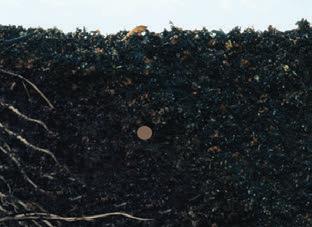





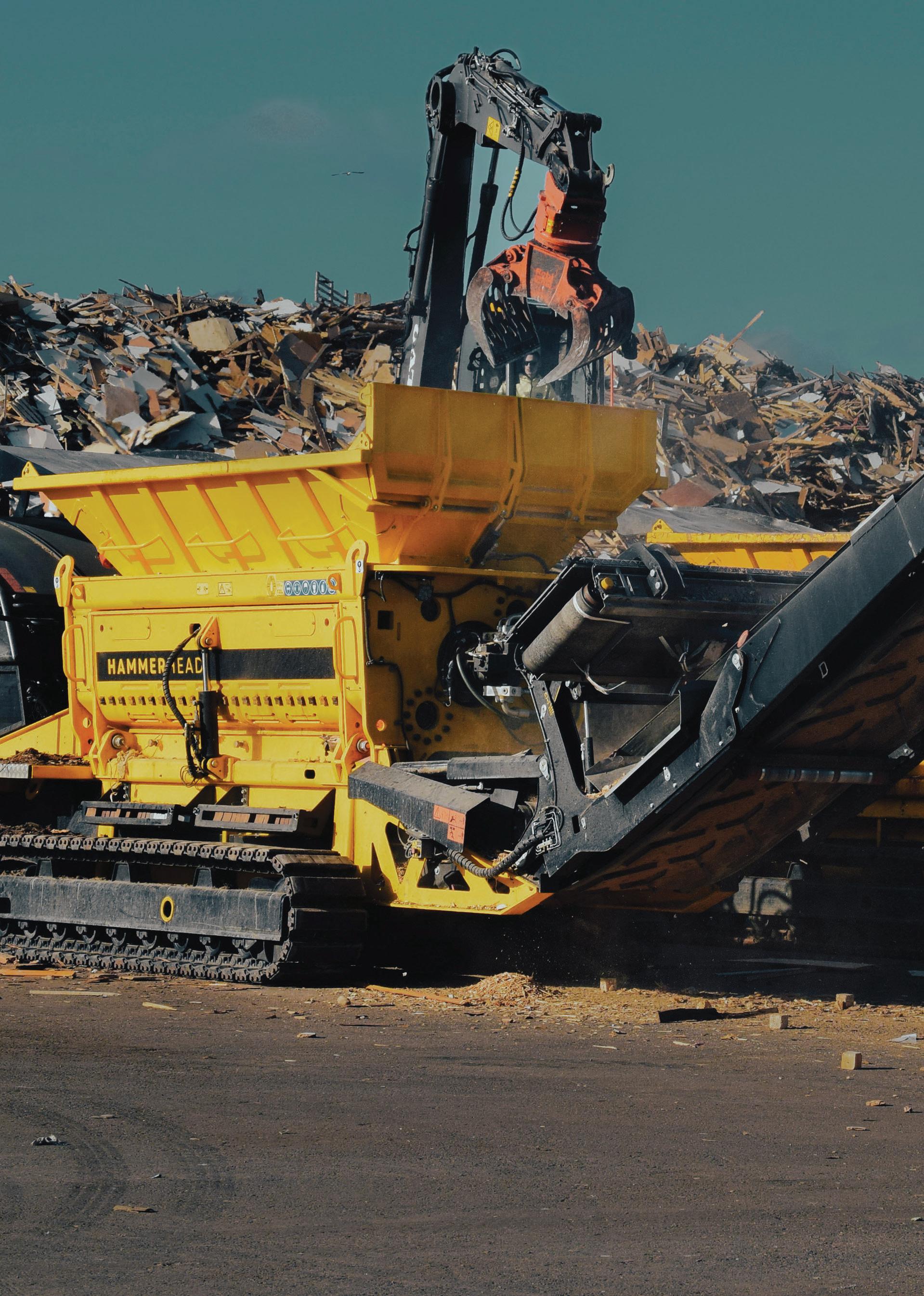
Morecapacity,moreefficiency,moreresults. Youaskedforit,webuiltit.TheTANA Hammerheadisdesignedspecificallyto delivergreaterefficiencyandthroughput forhigh-volumewastestreams.Increased rotorRPMs,uniqueadaptabilityand trustedengineering.Allinonemachine.
